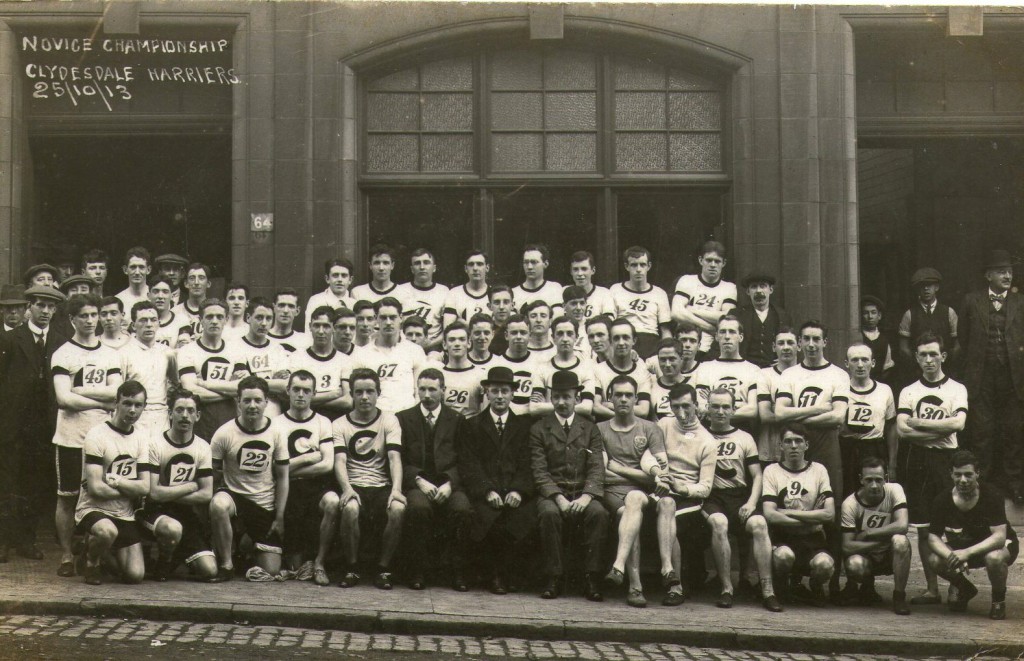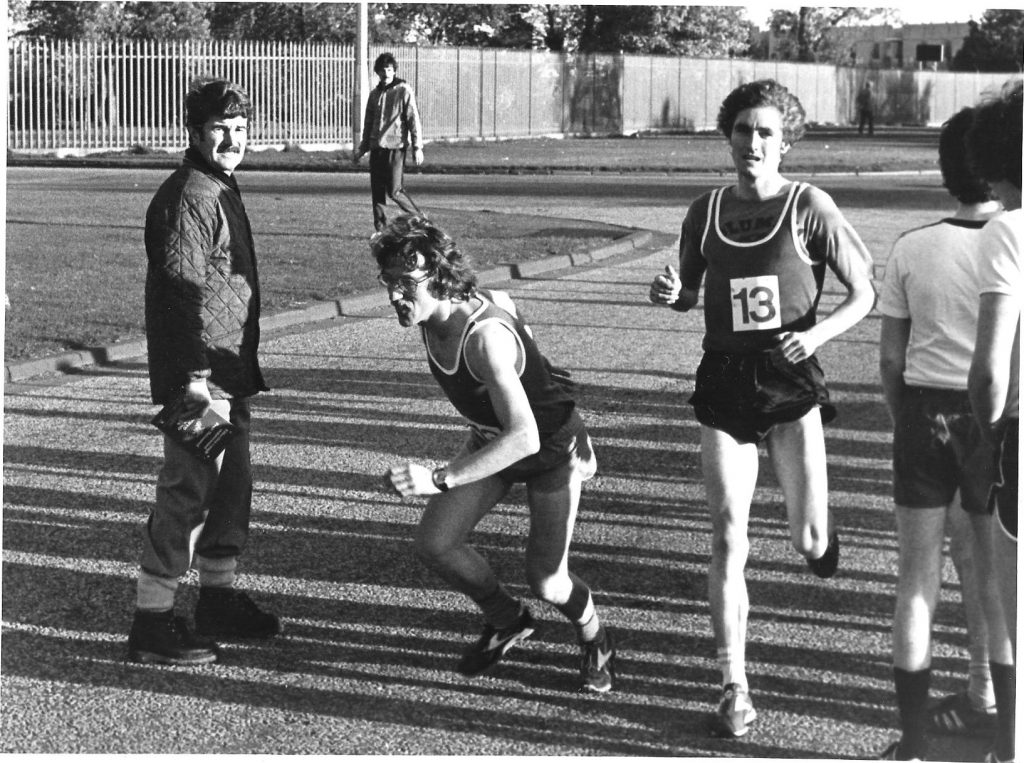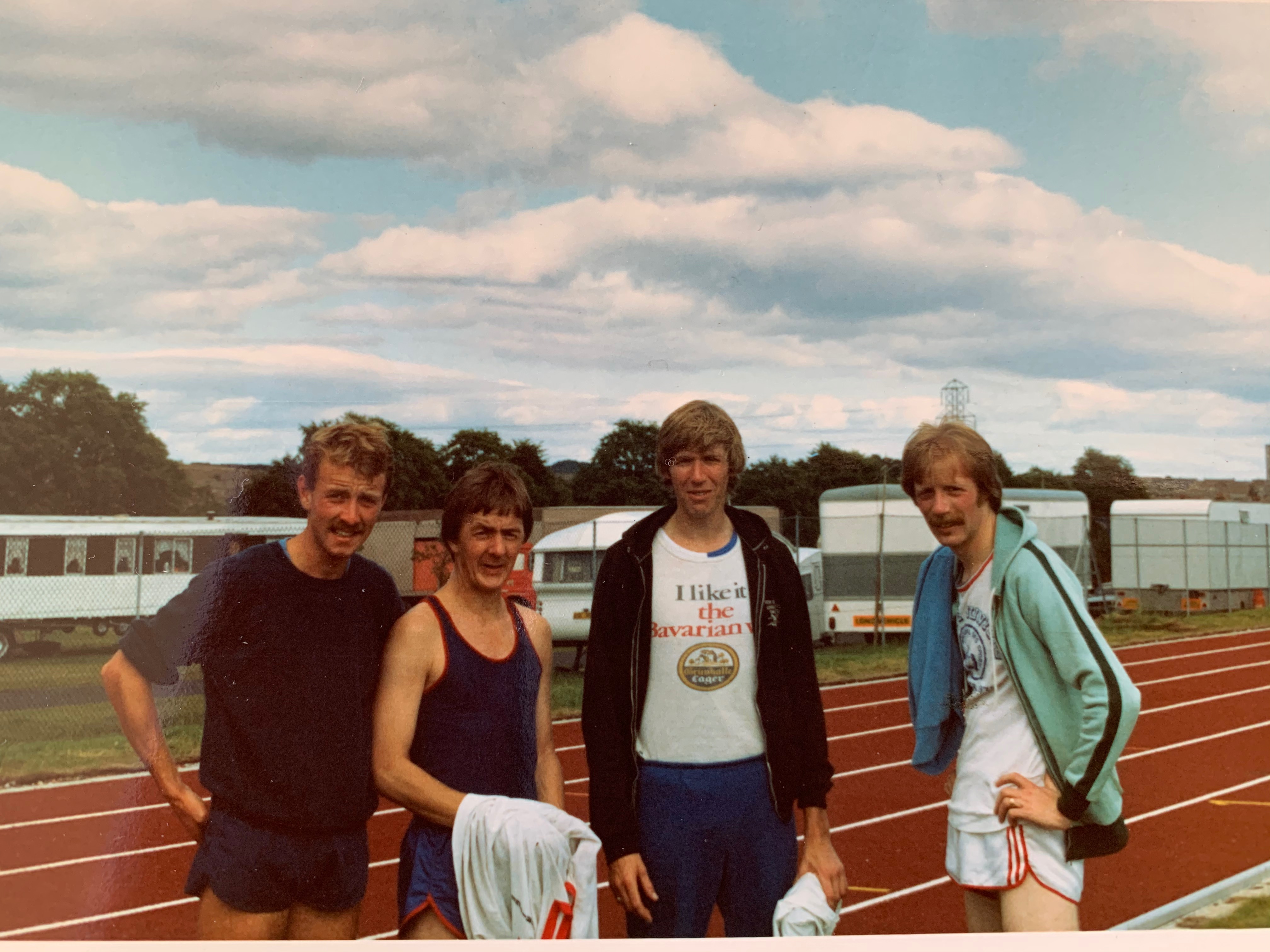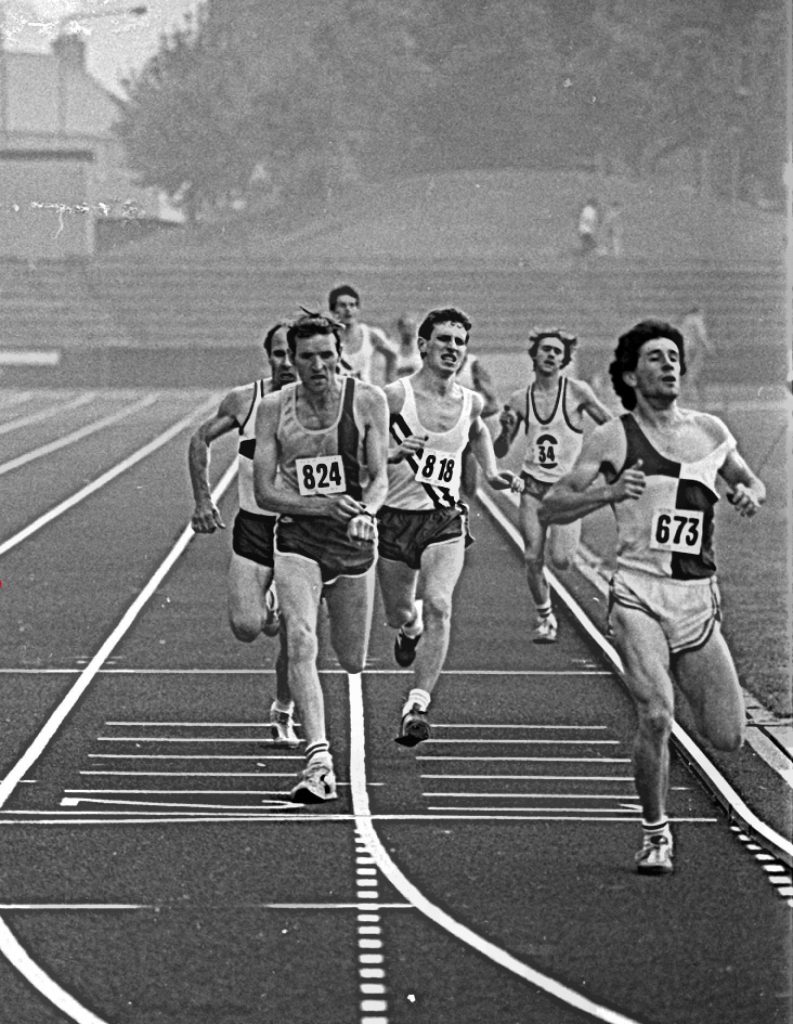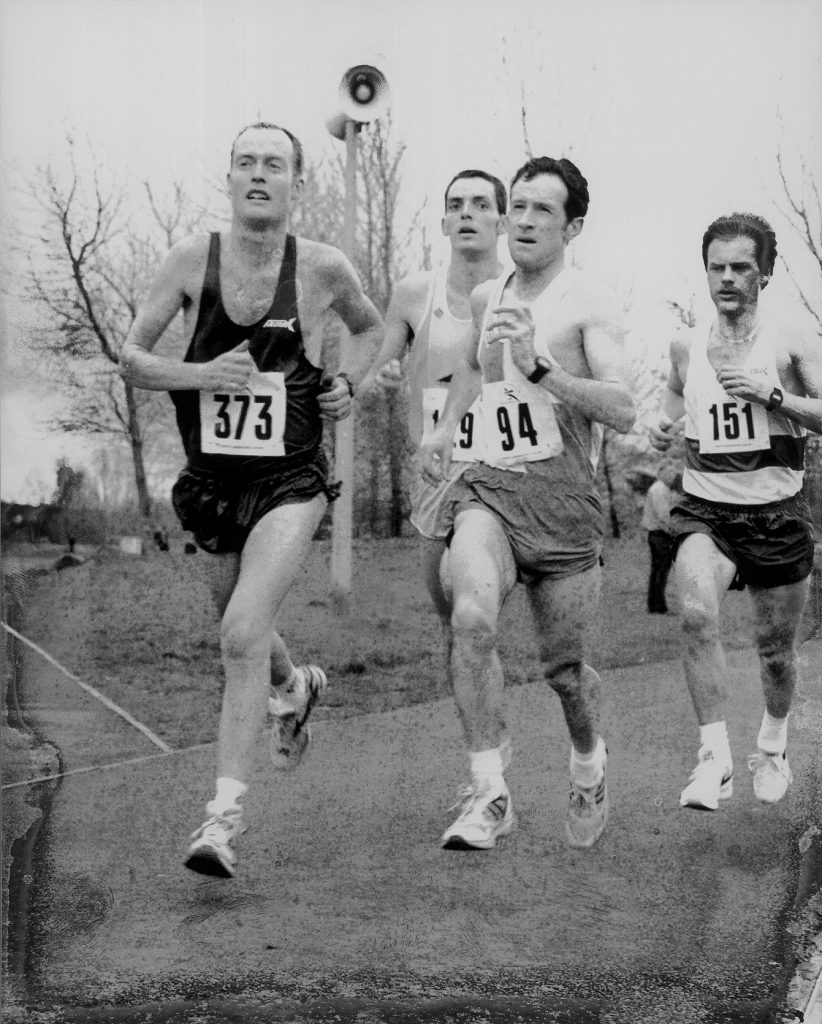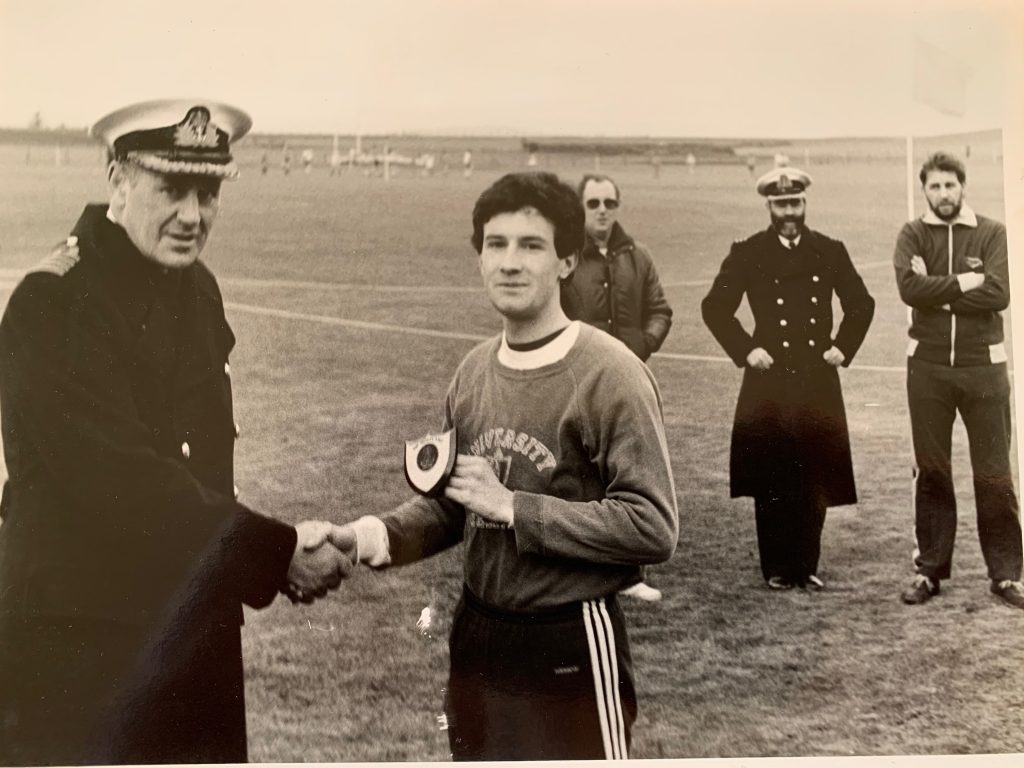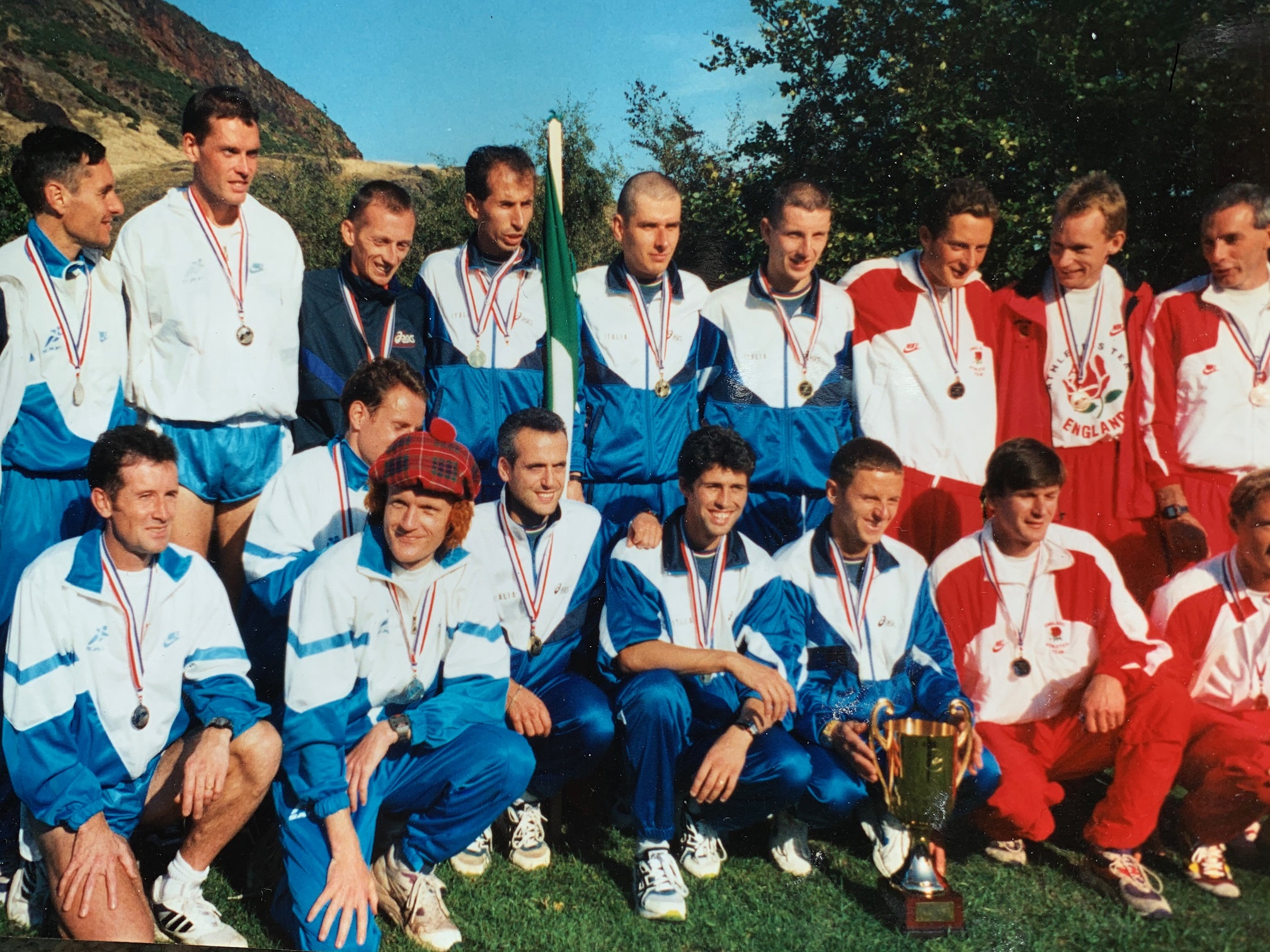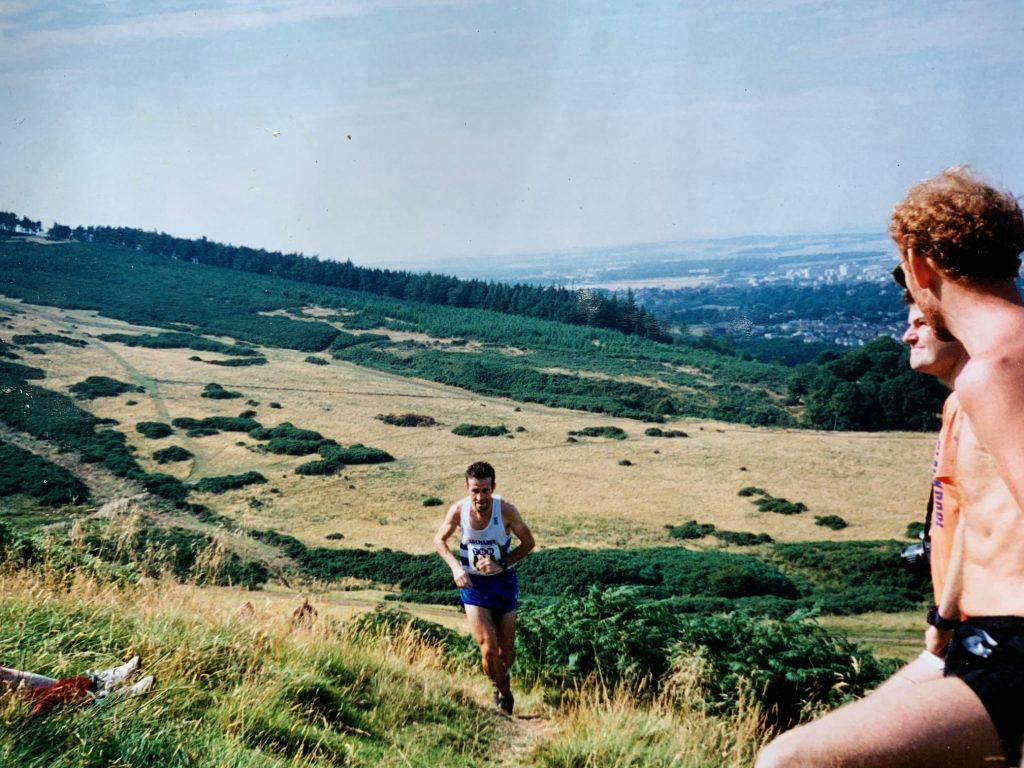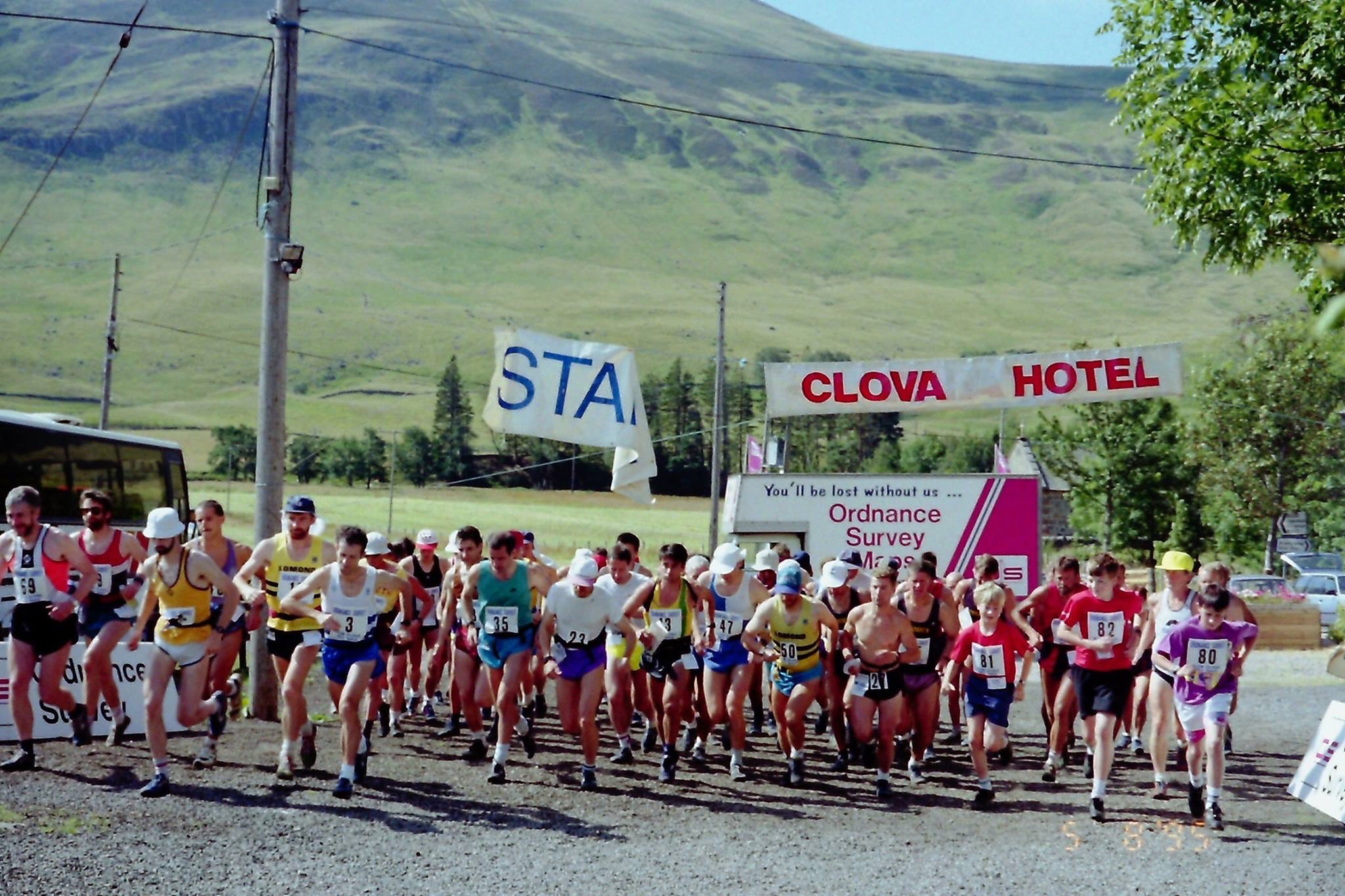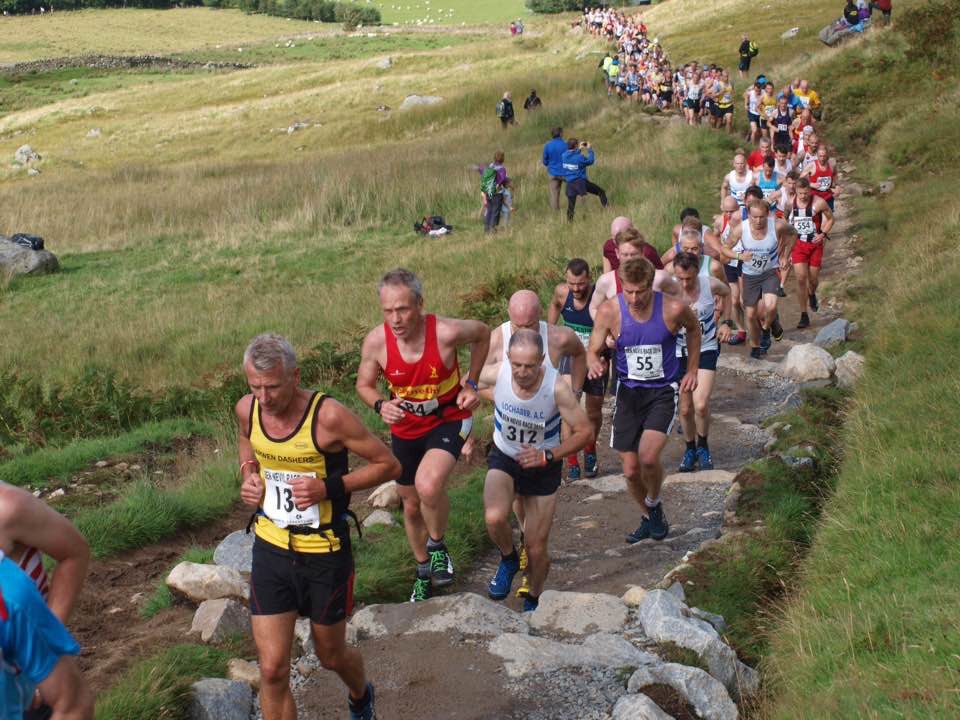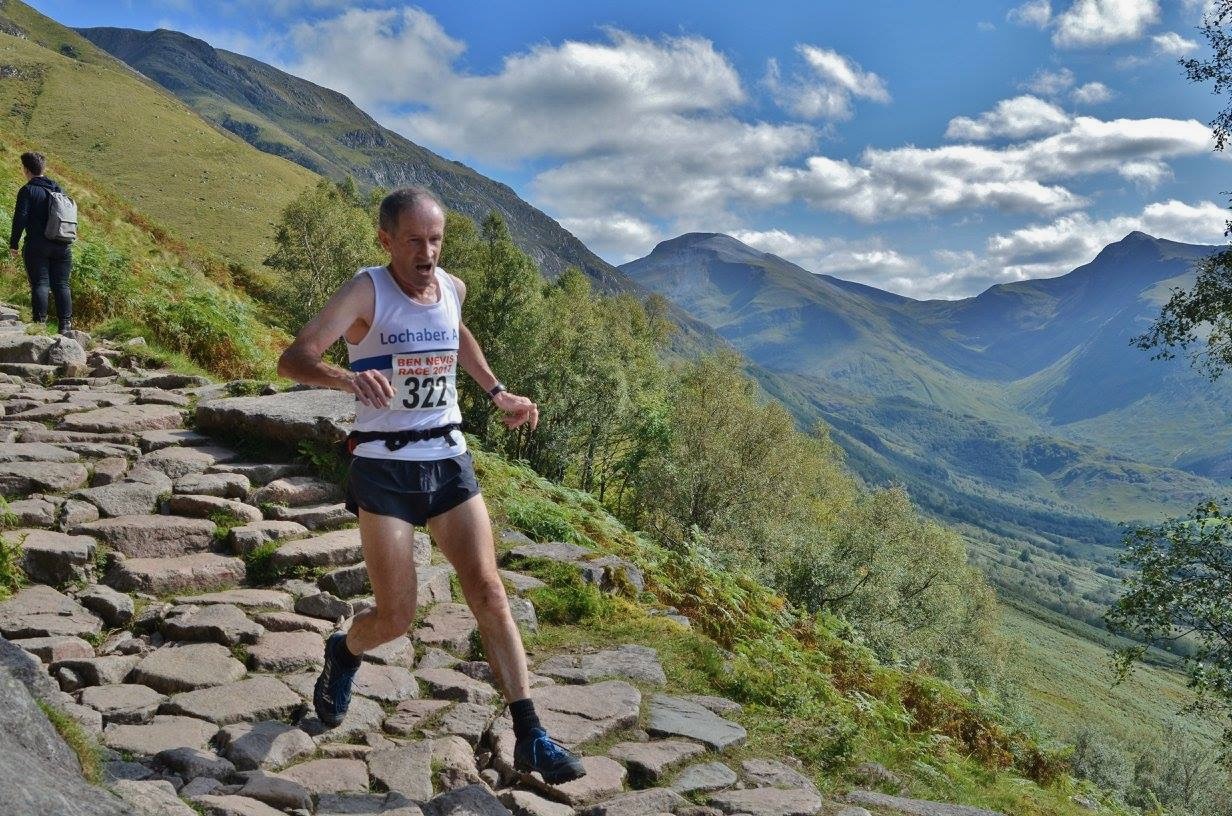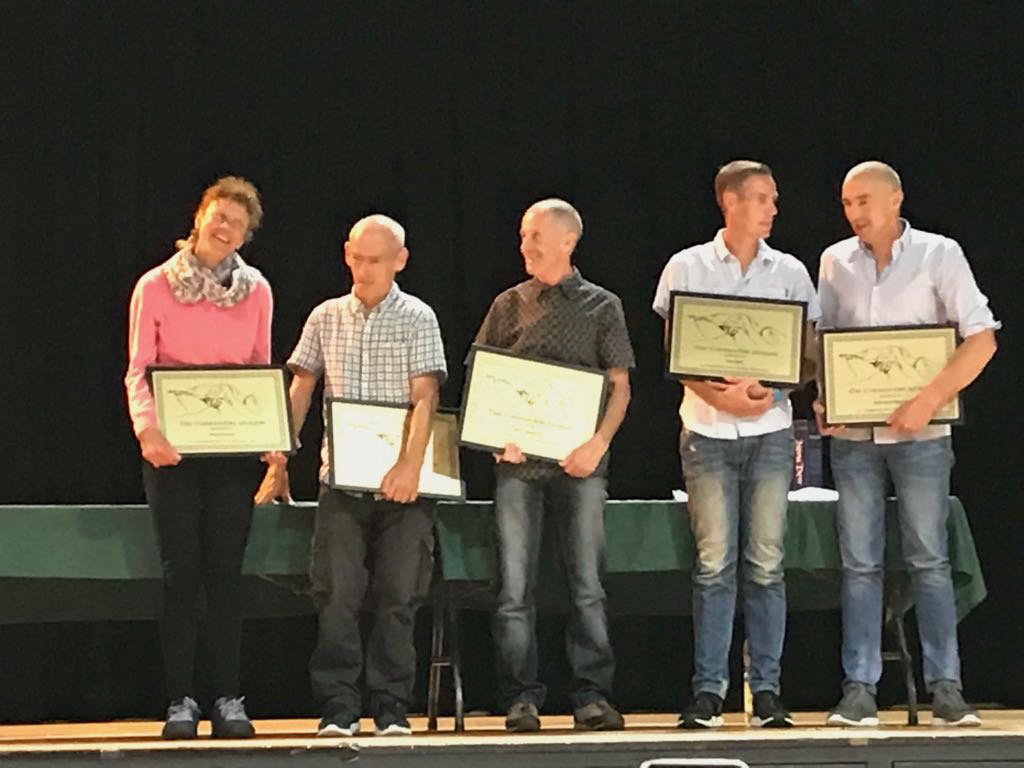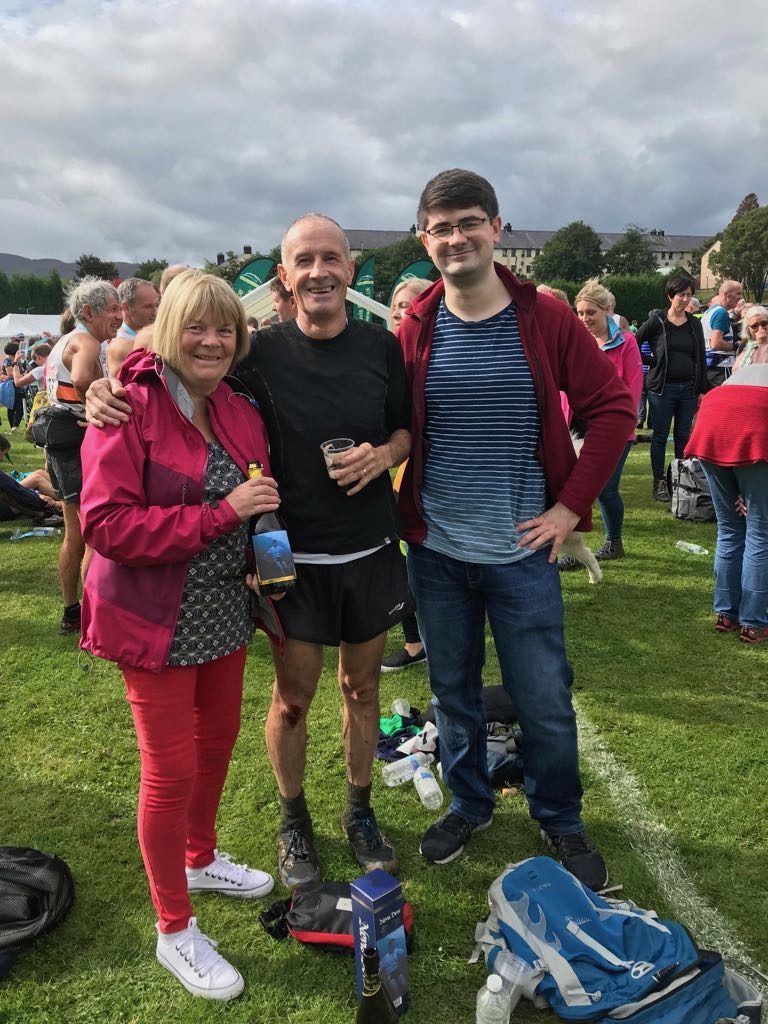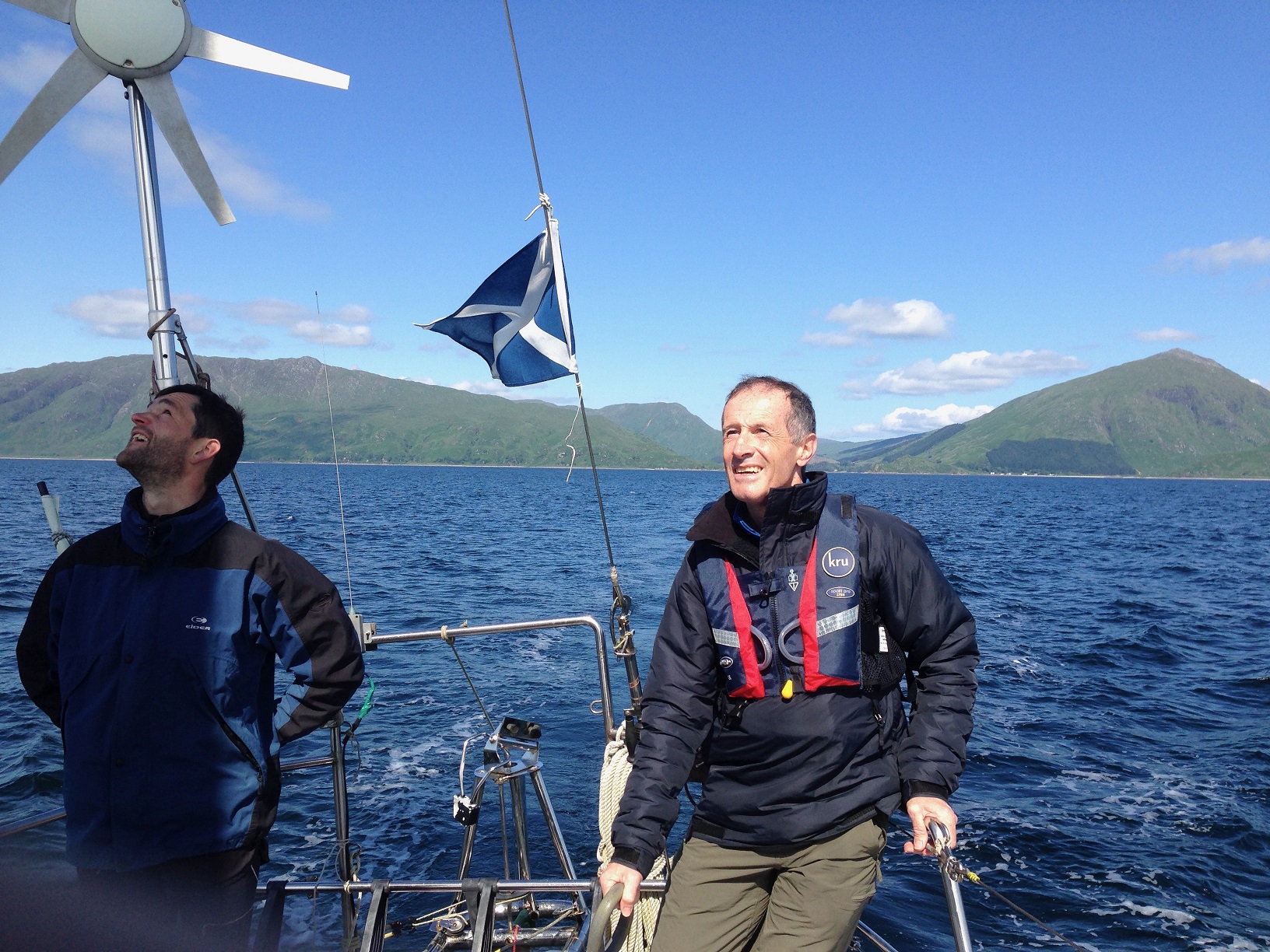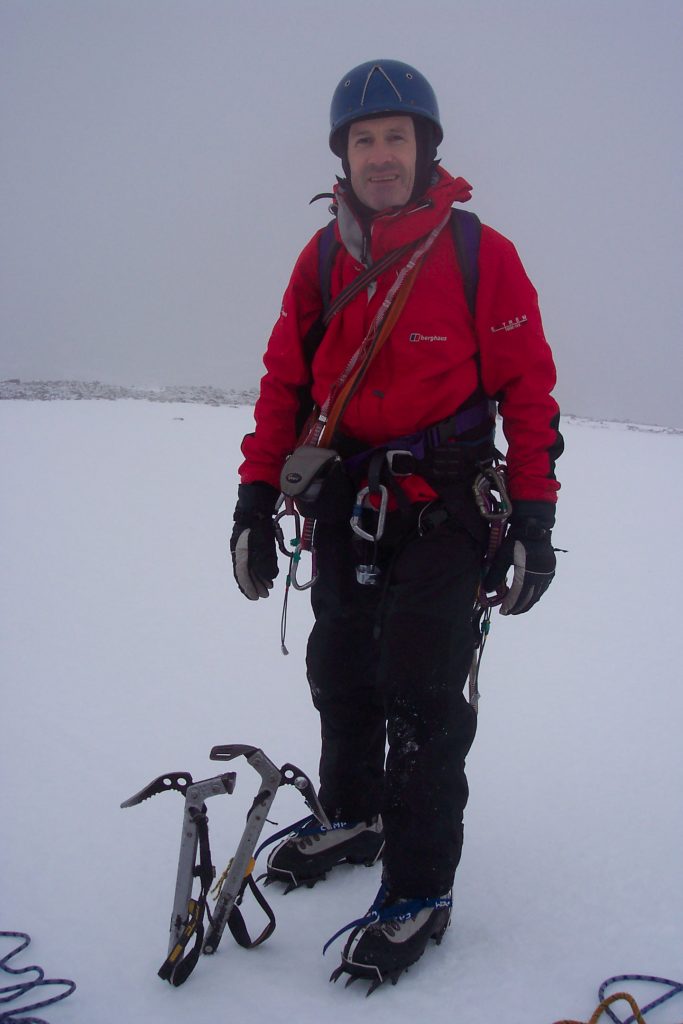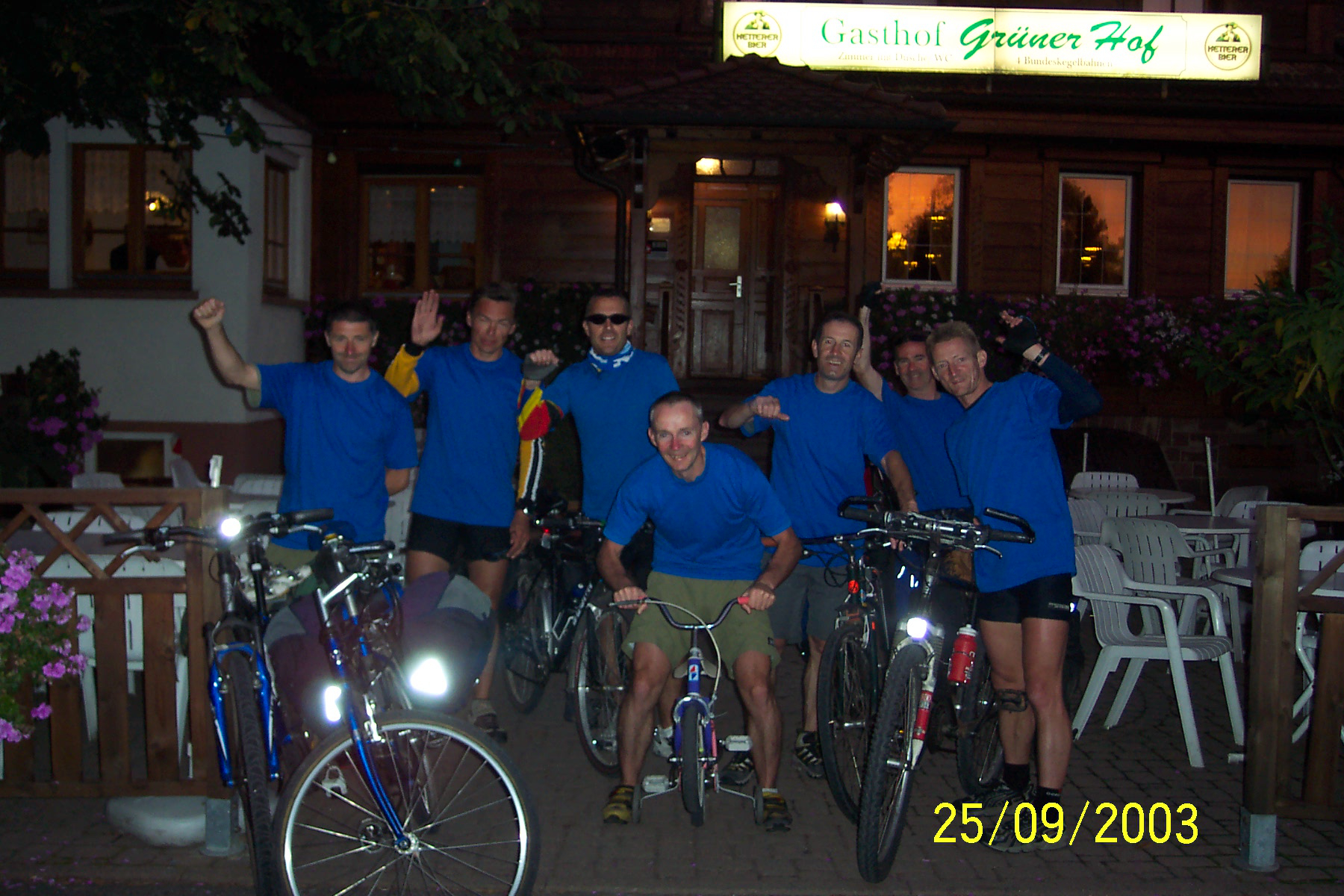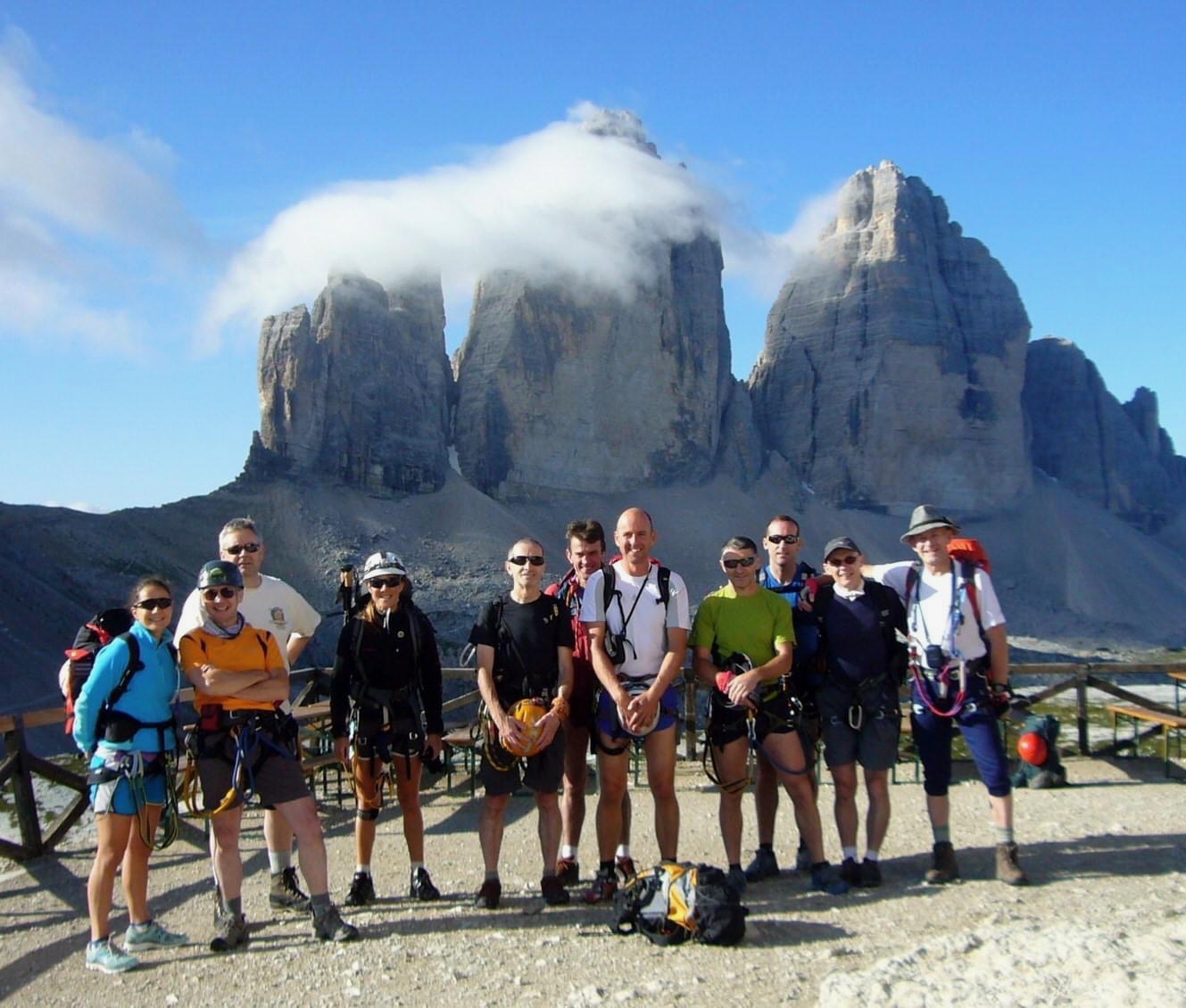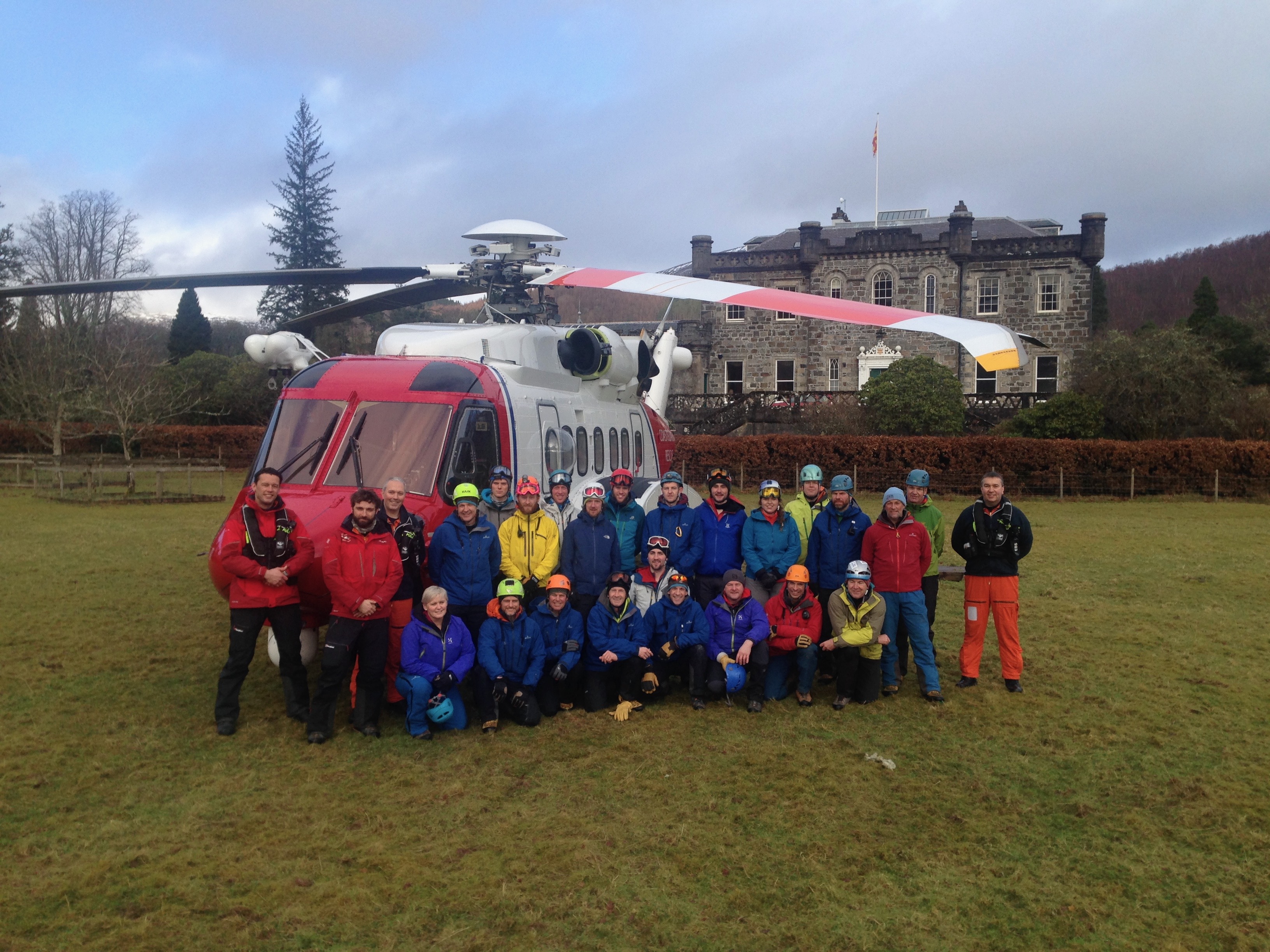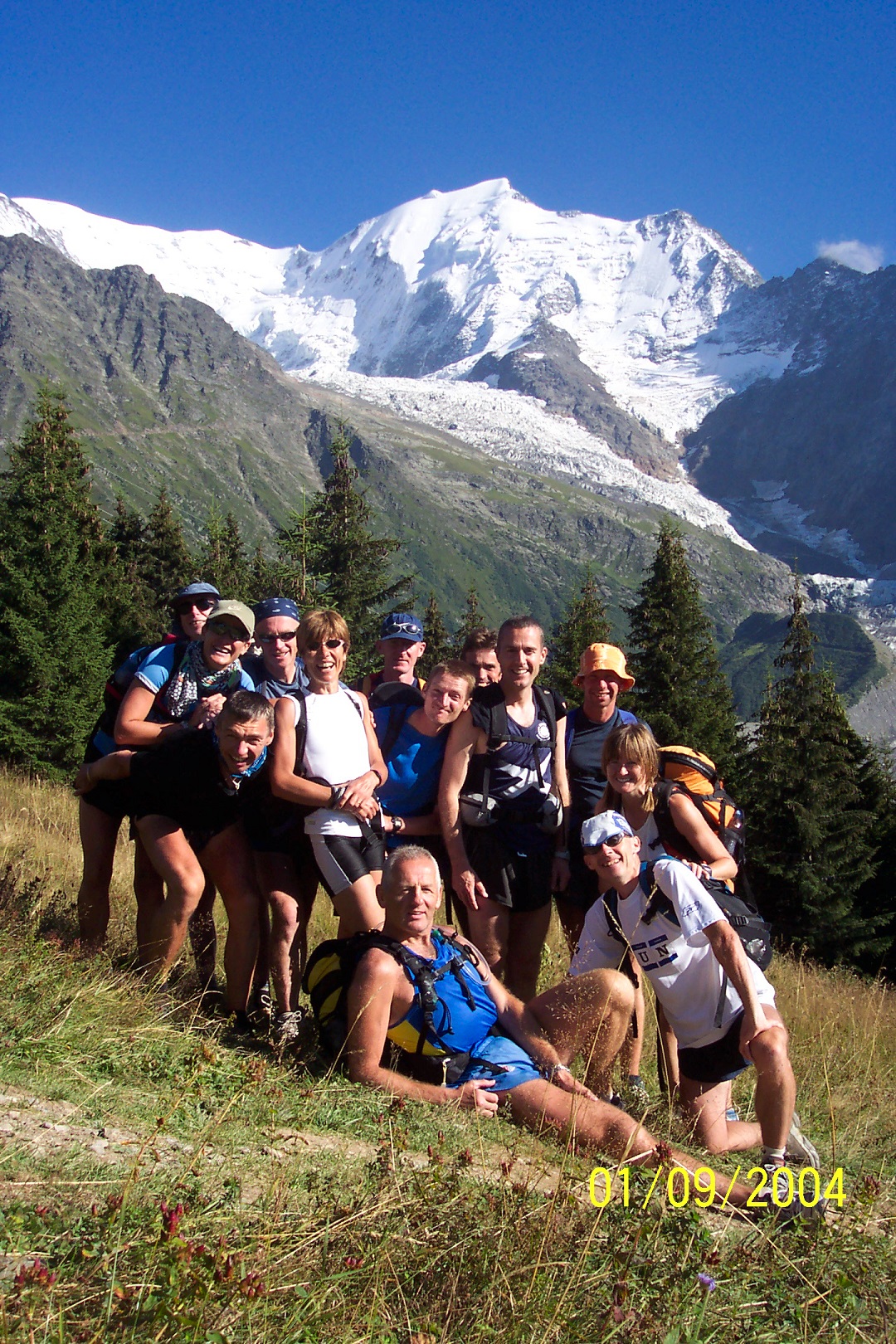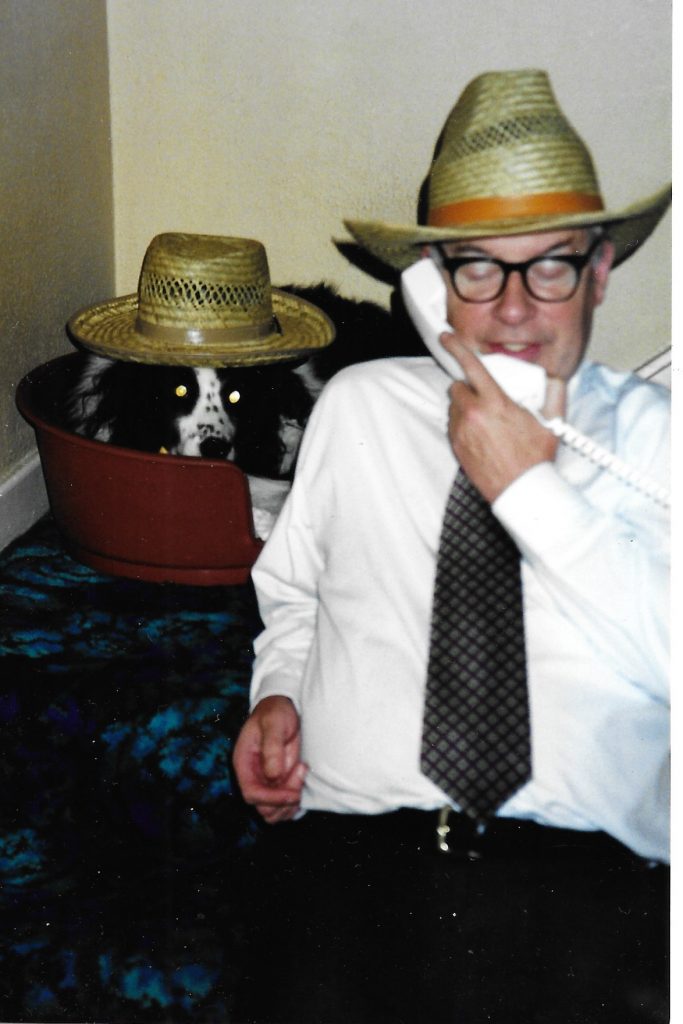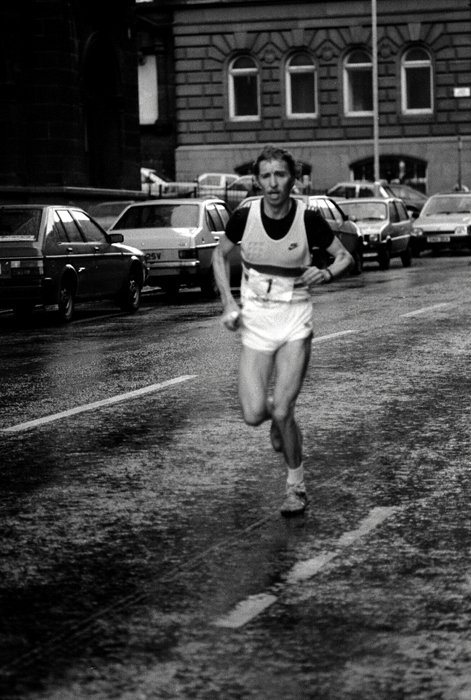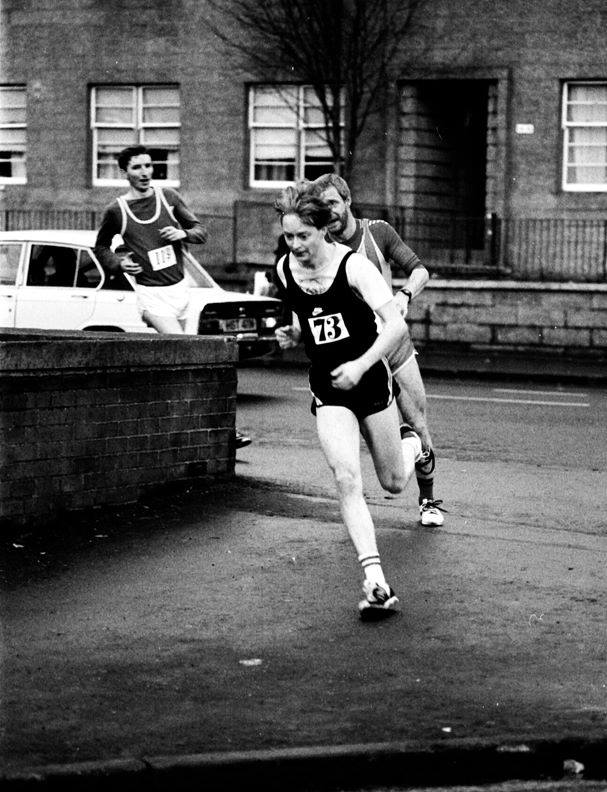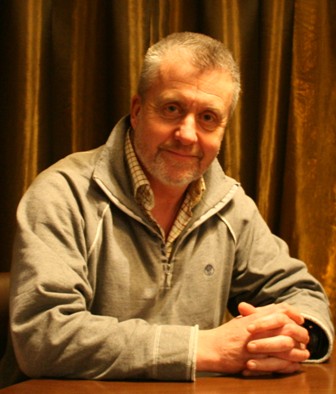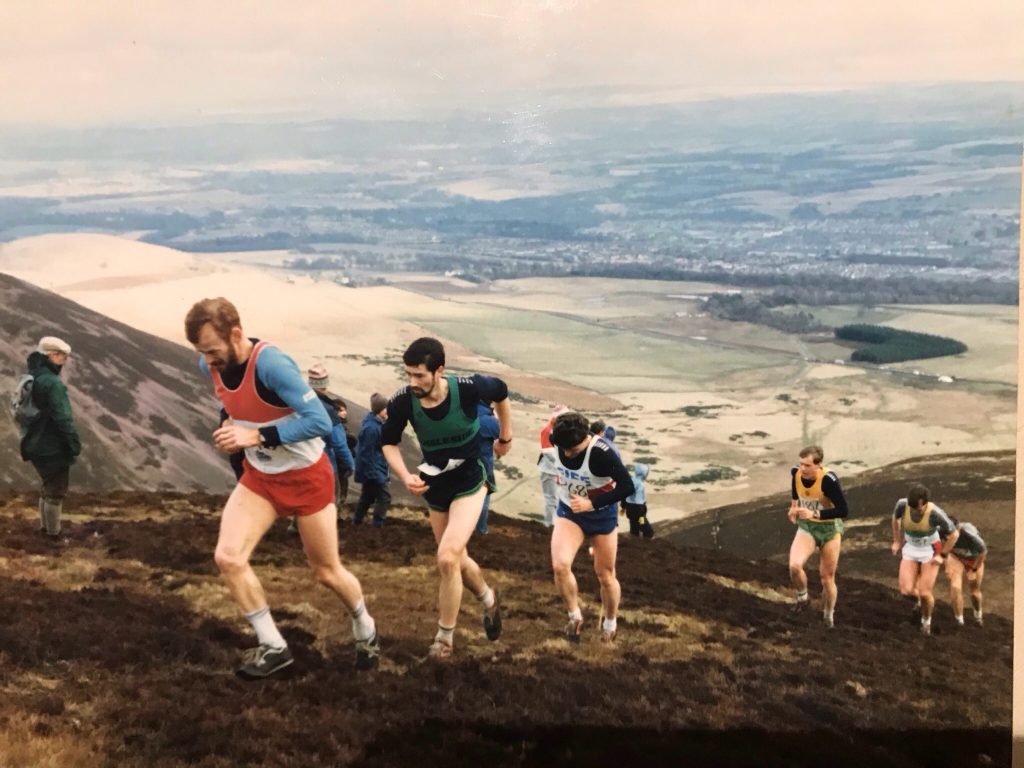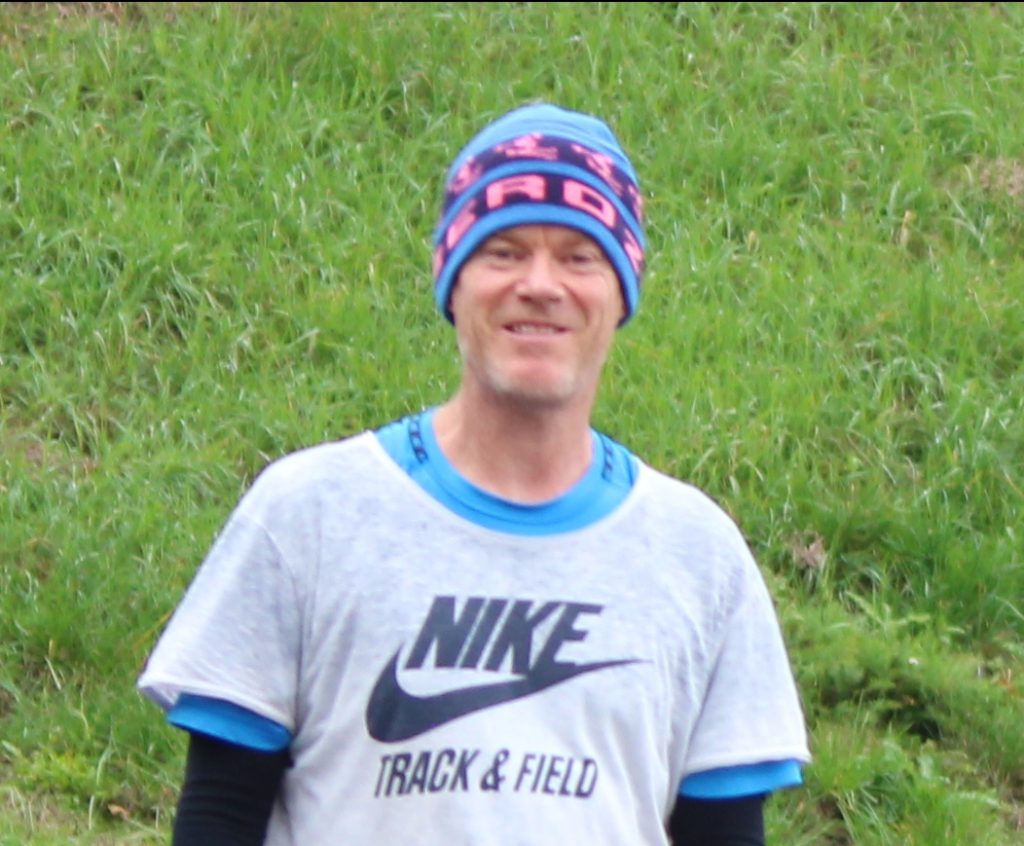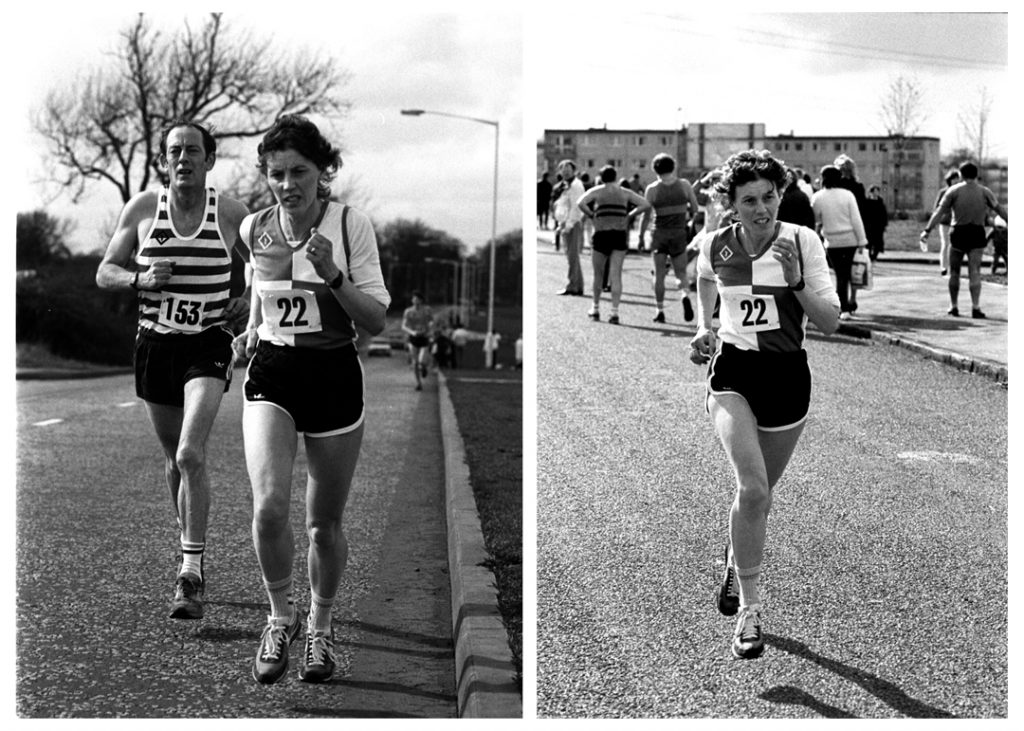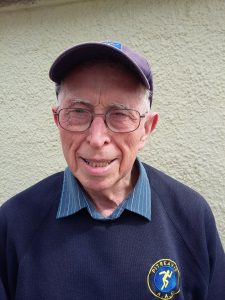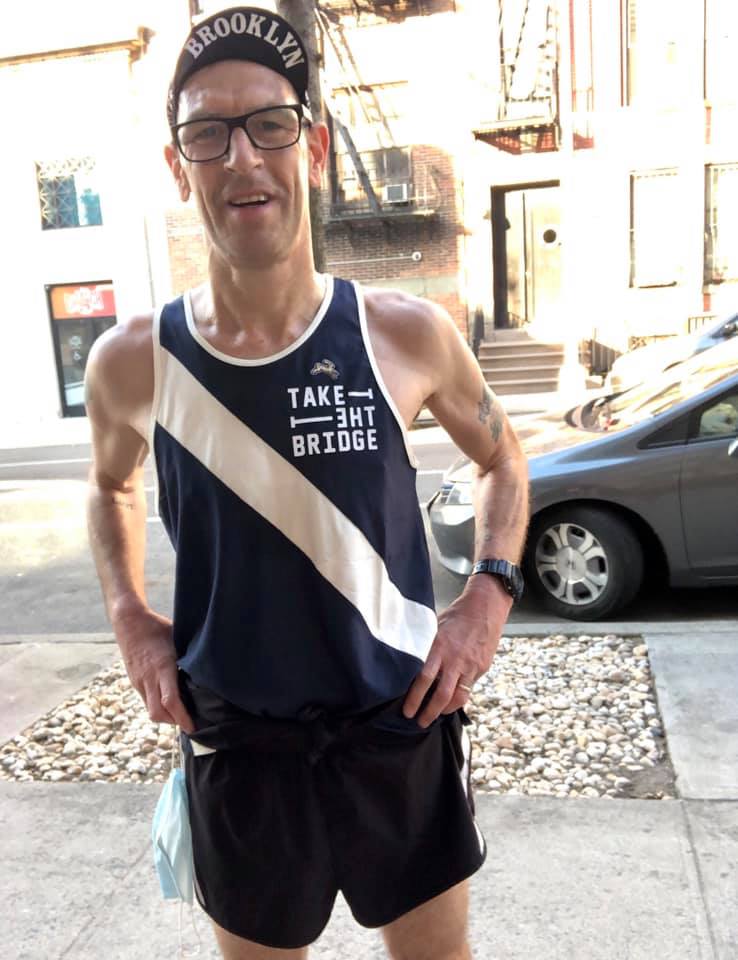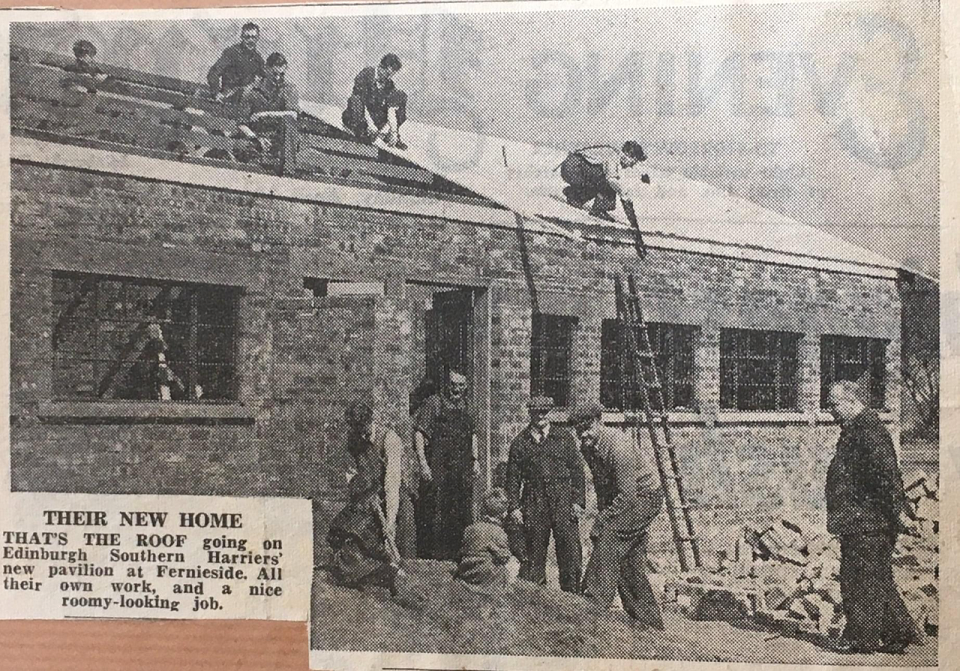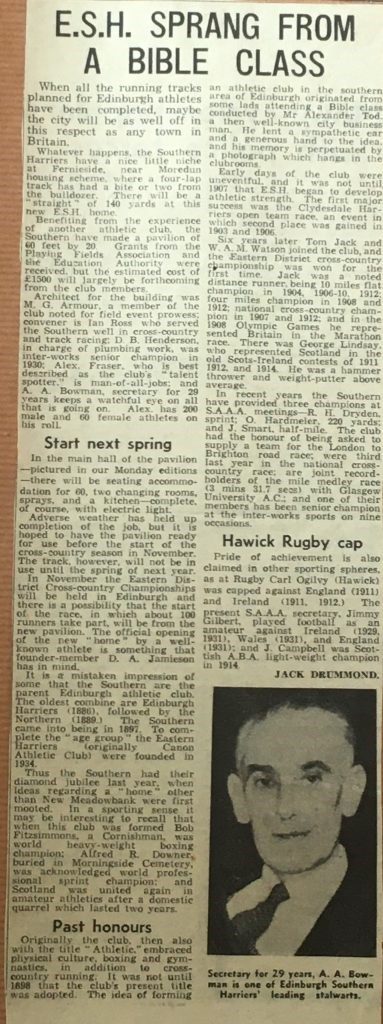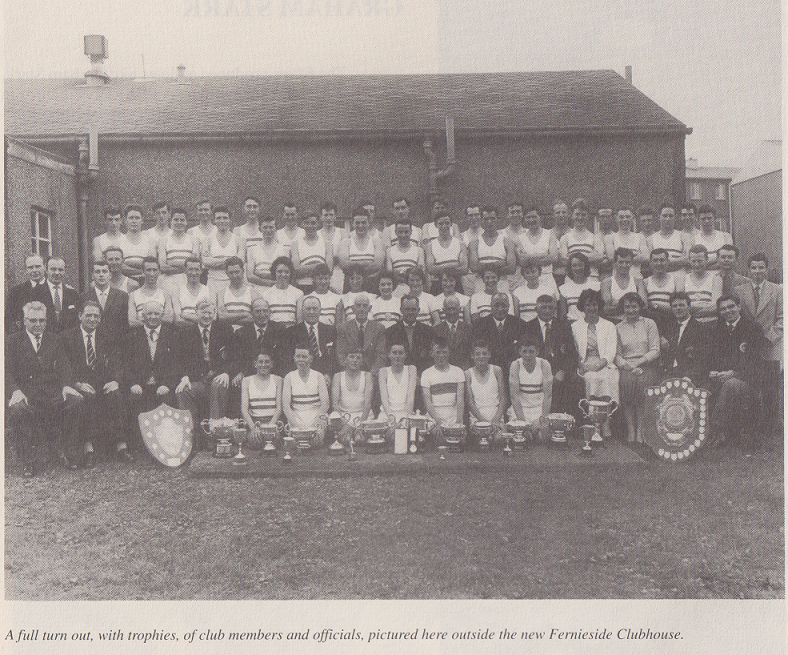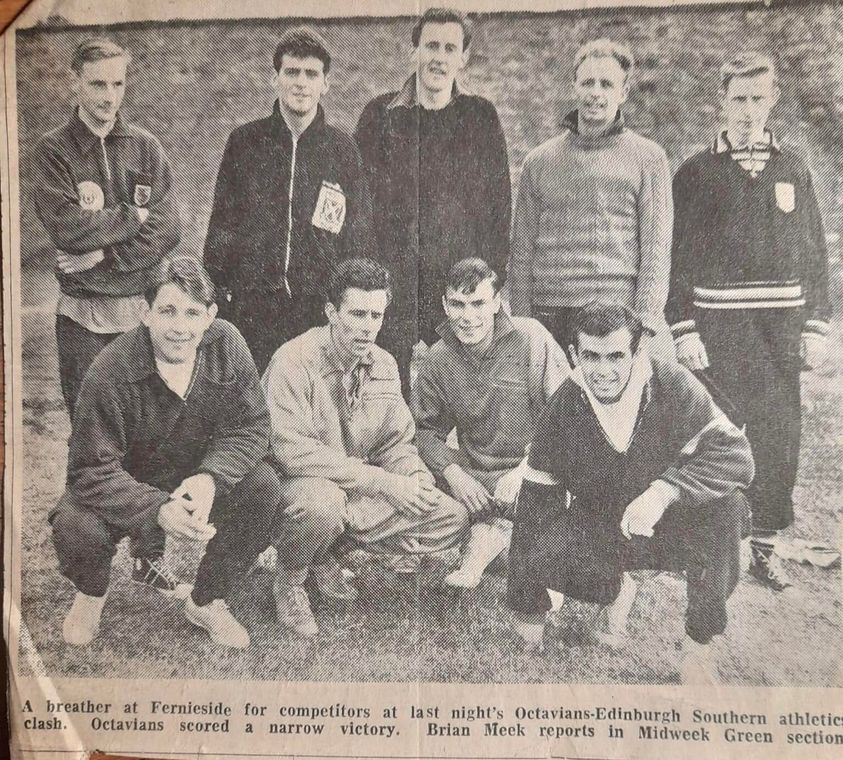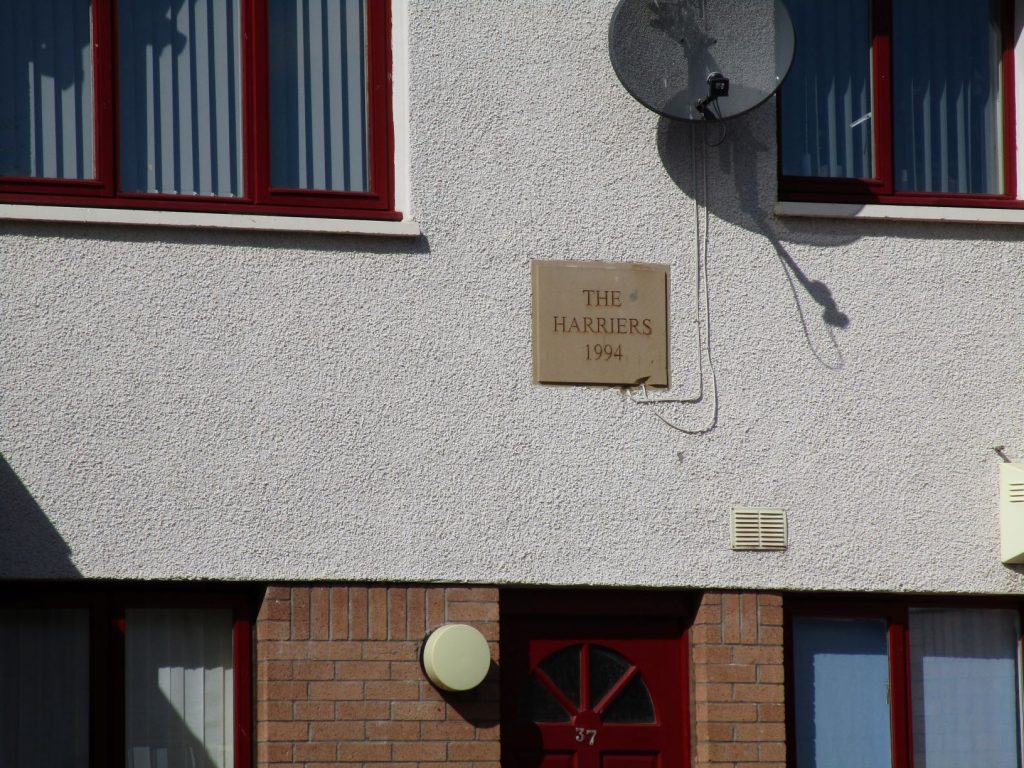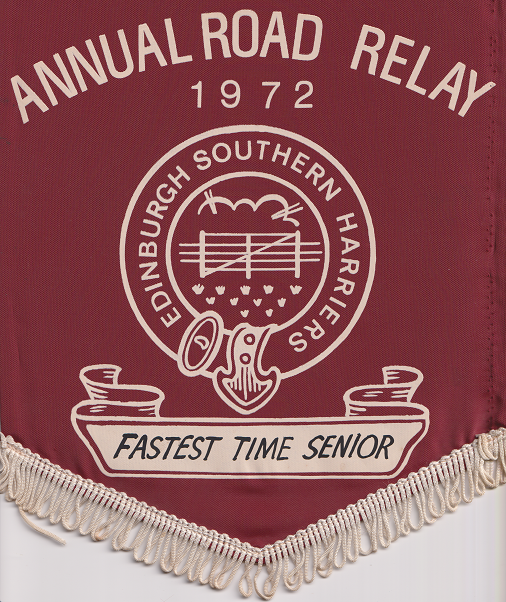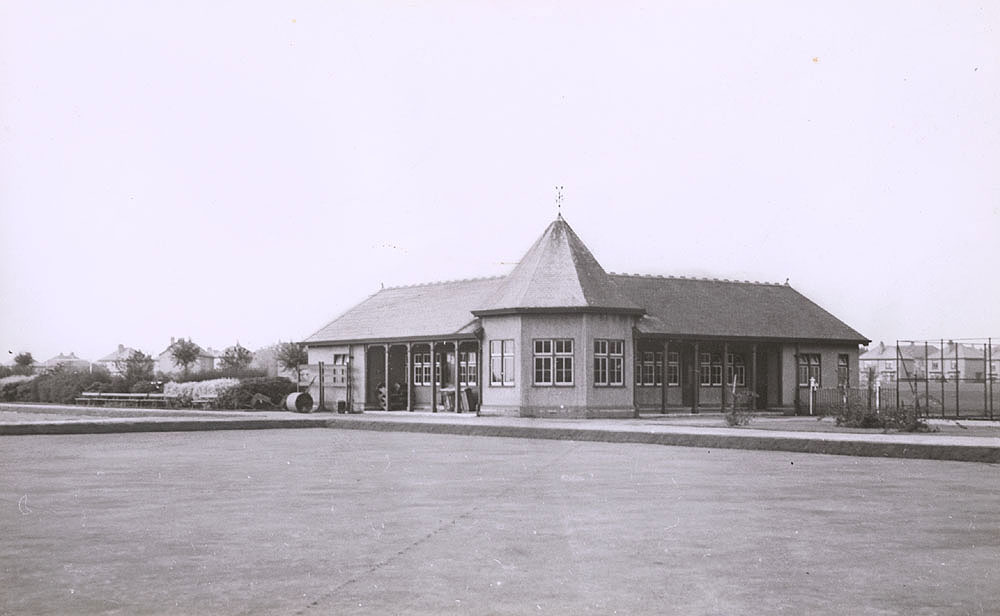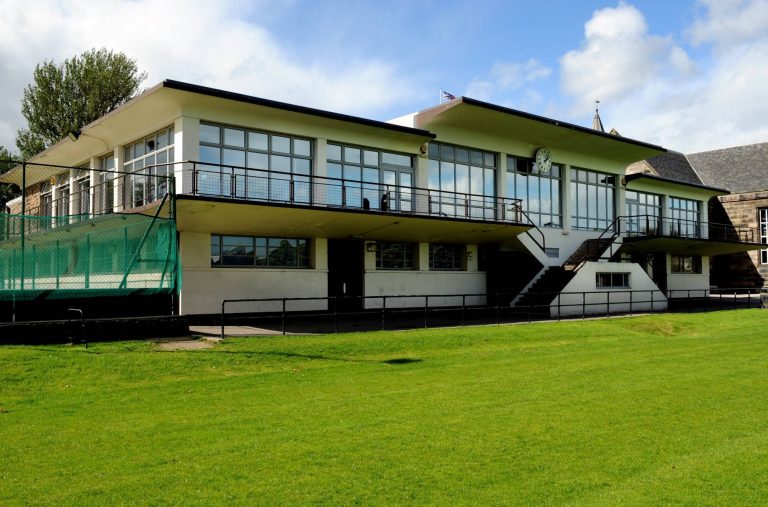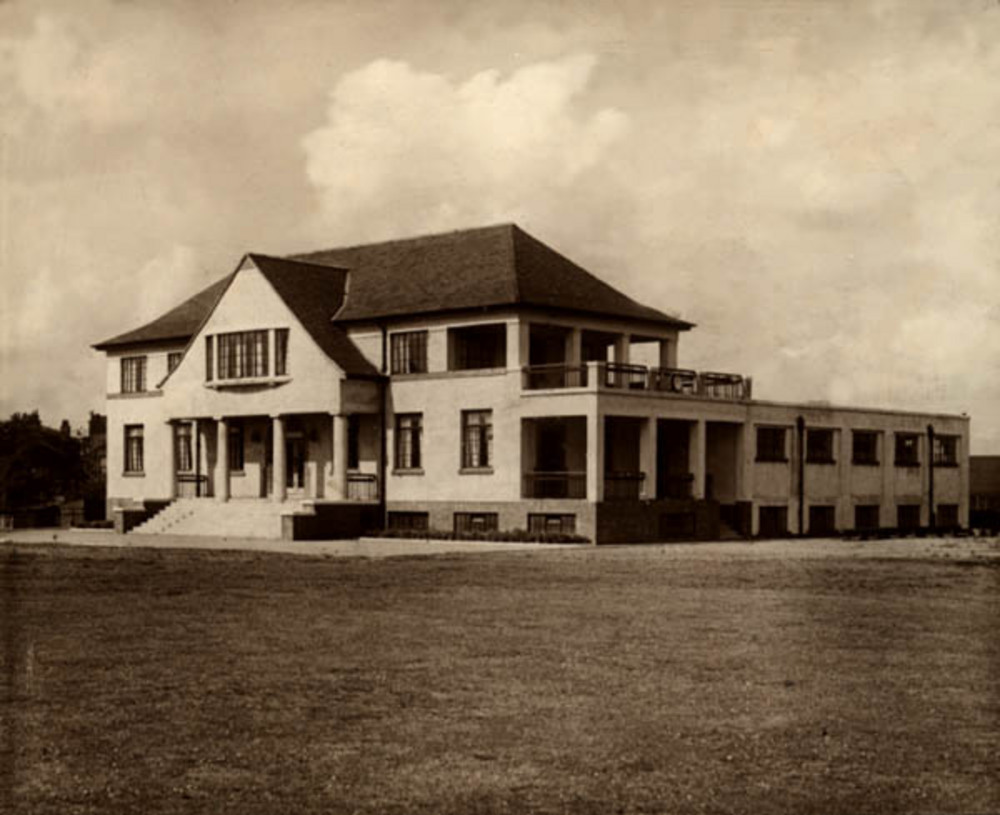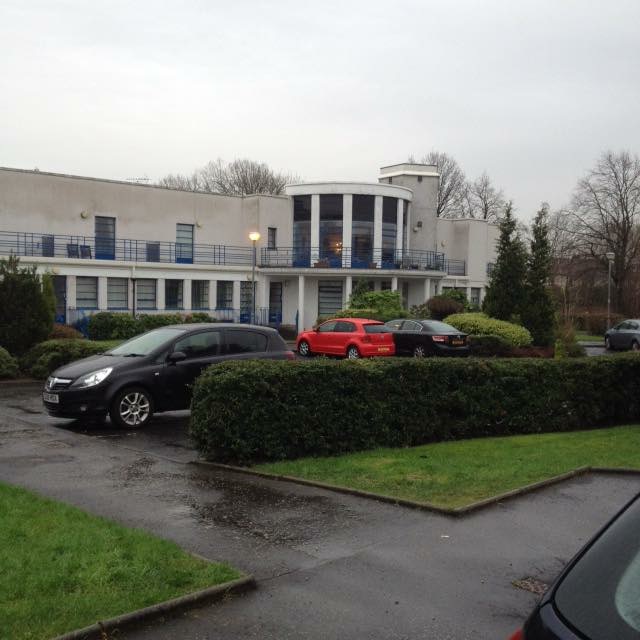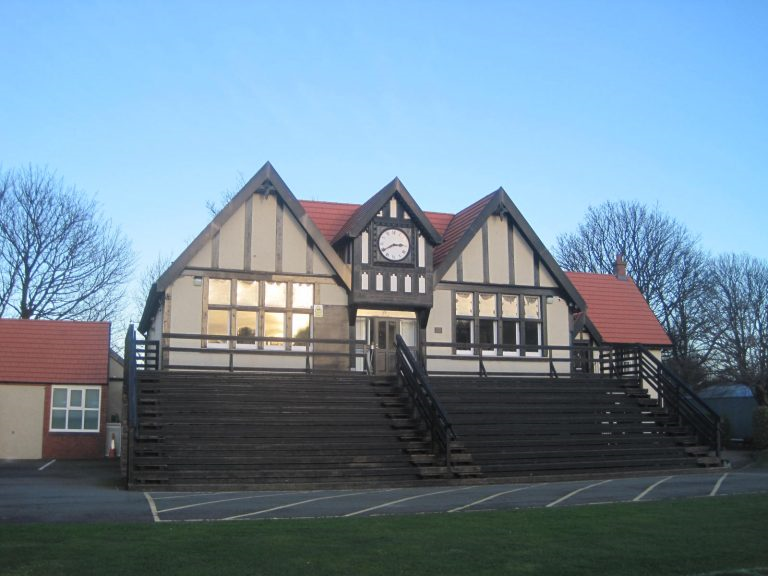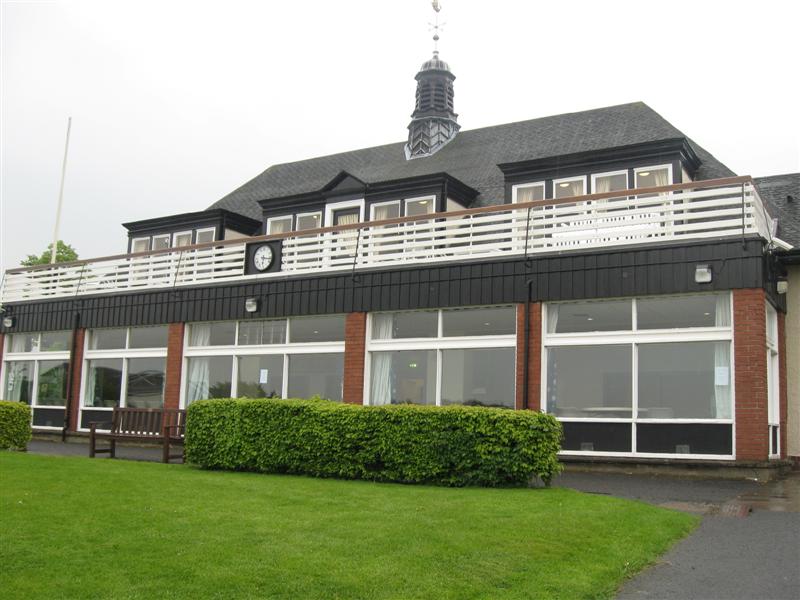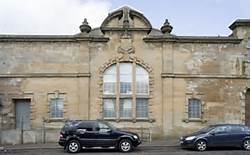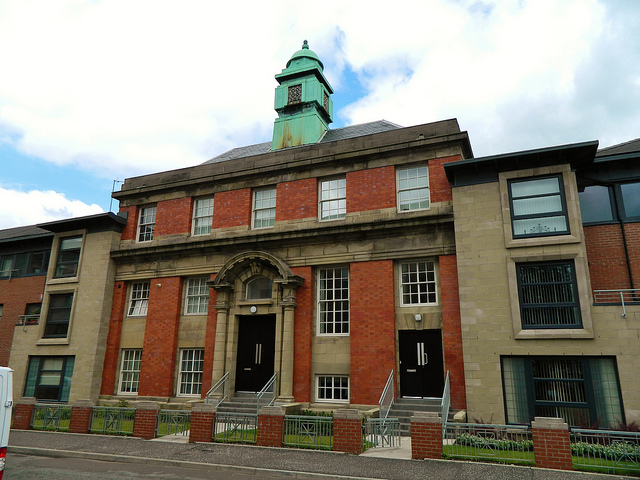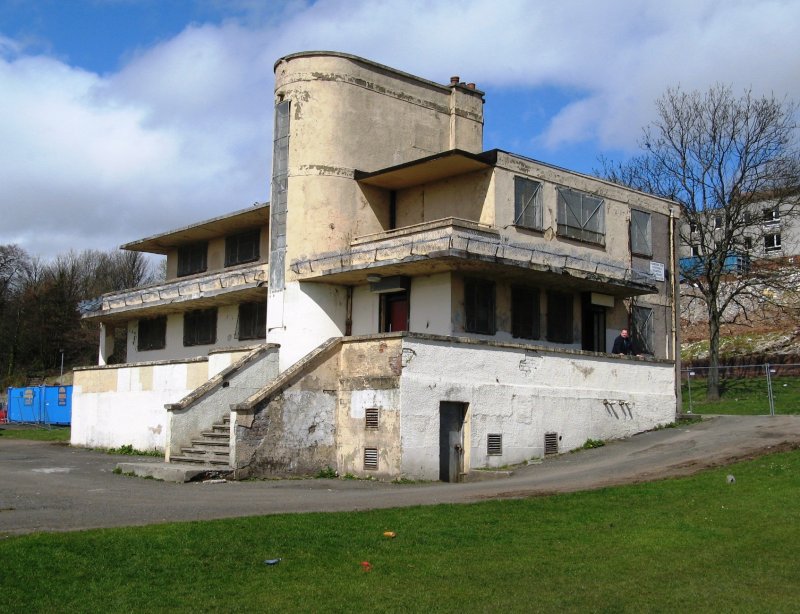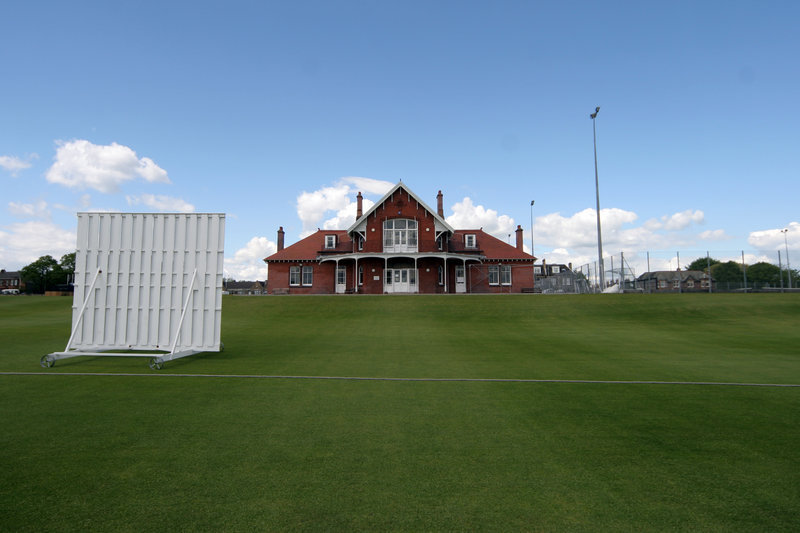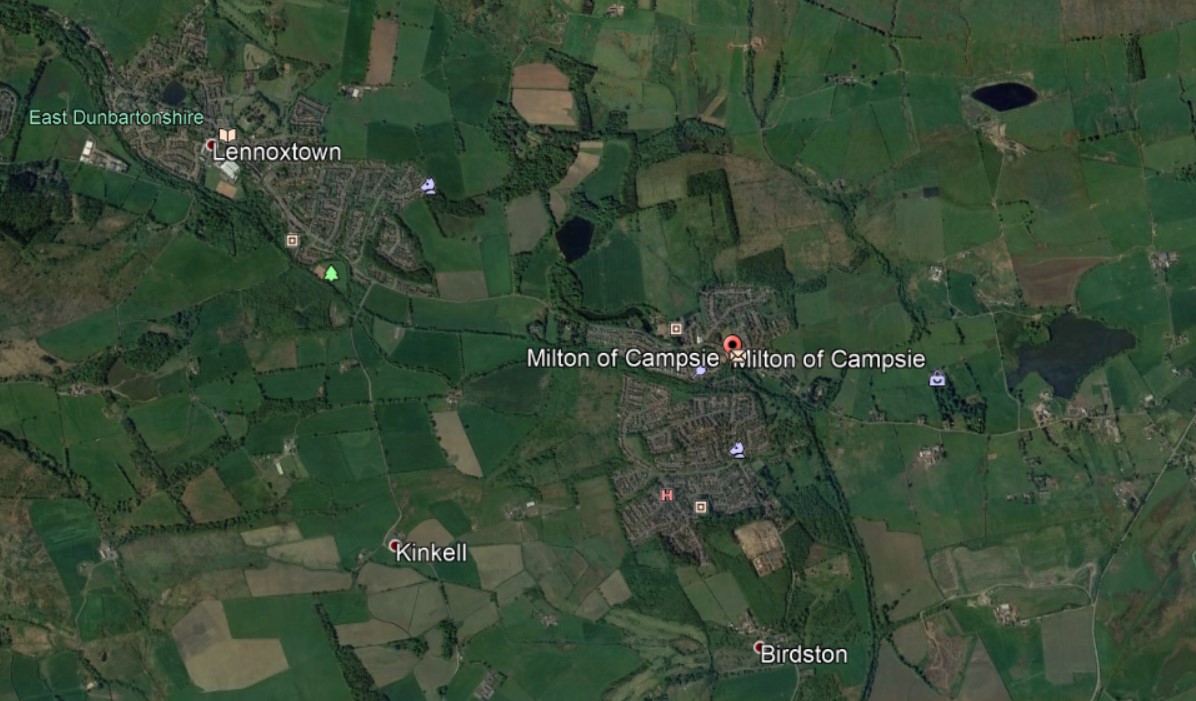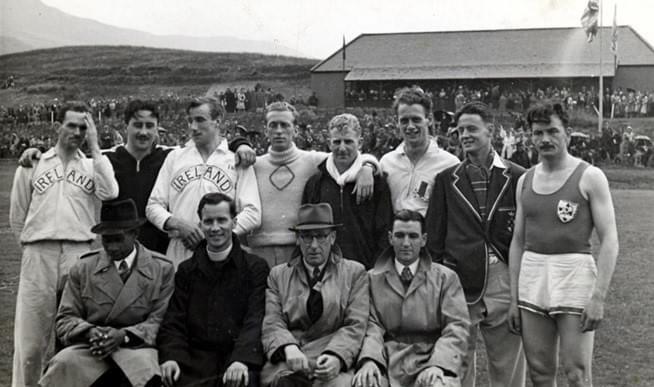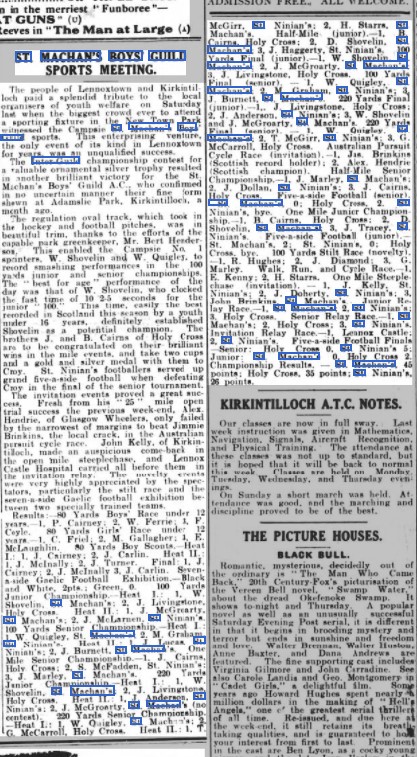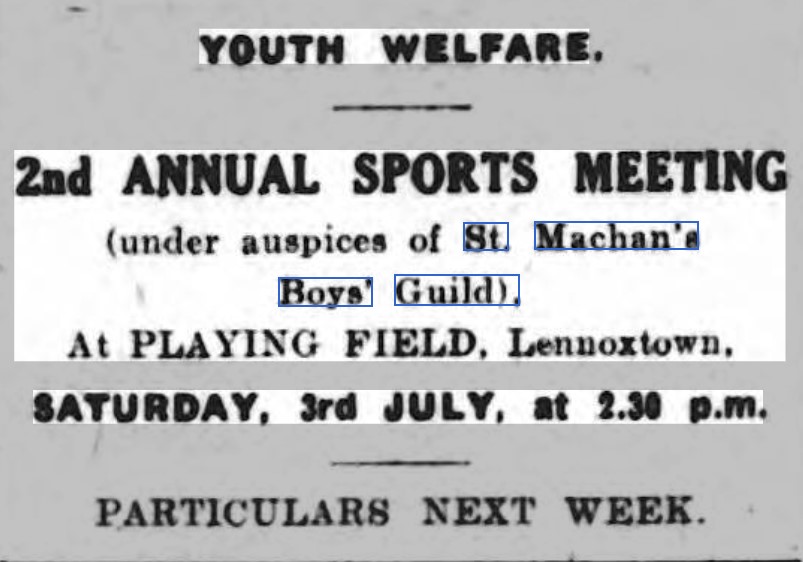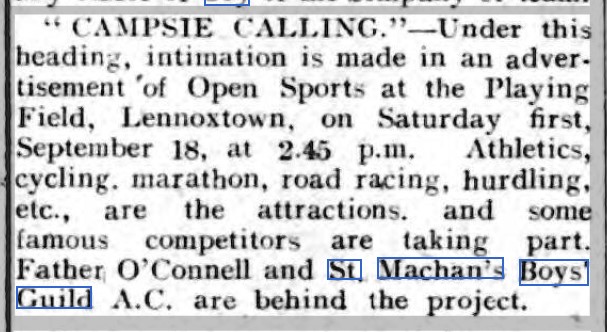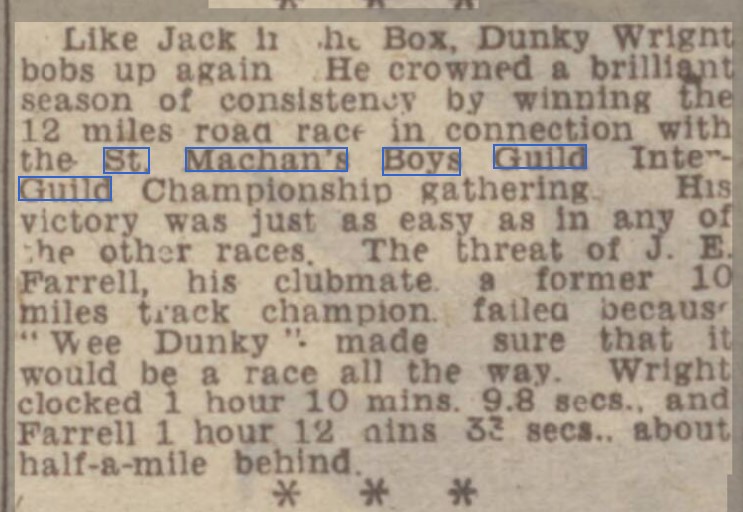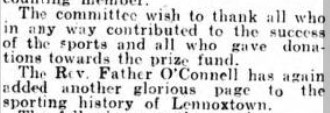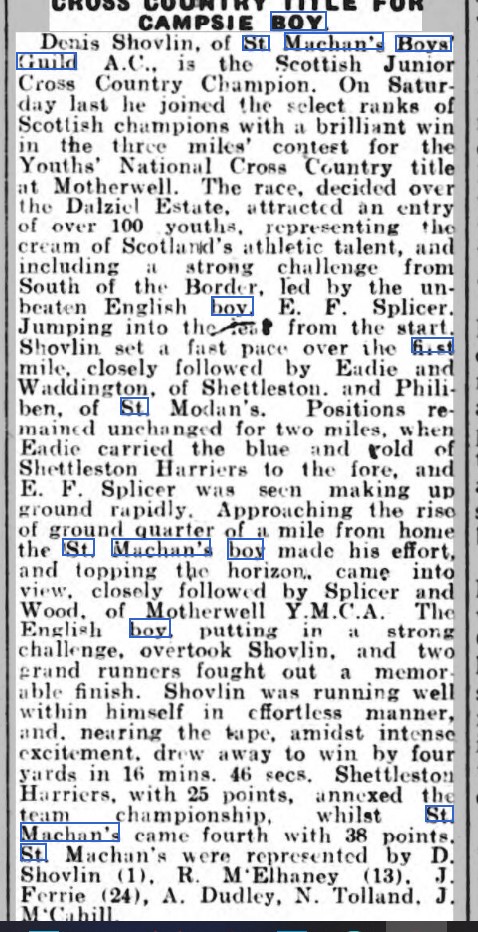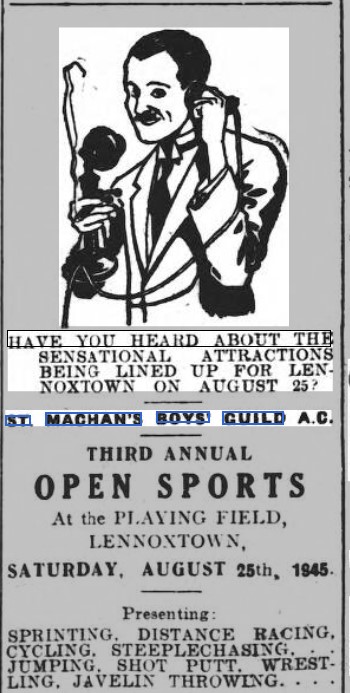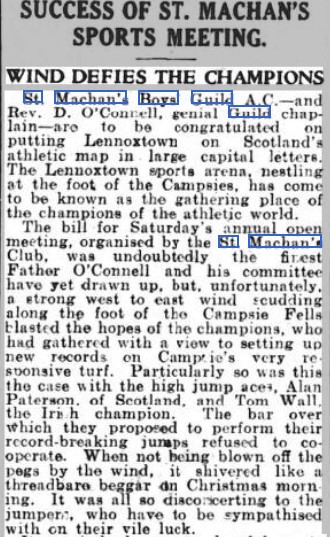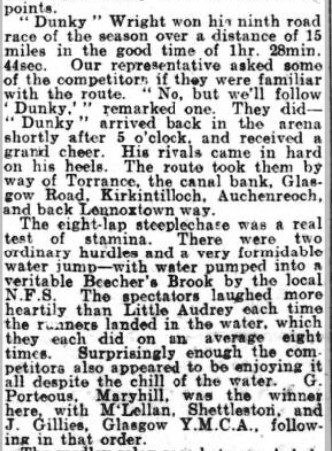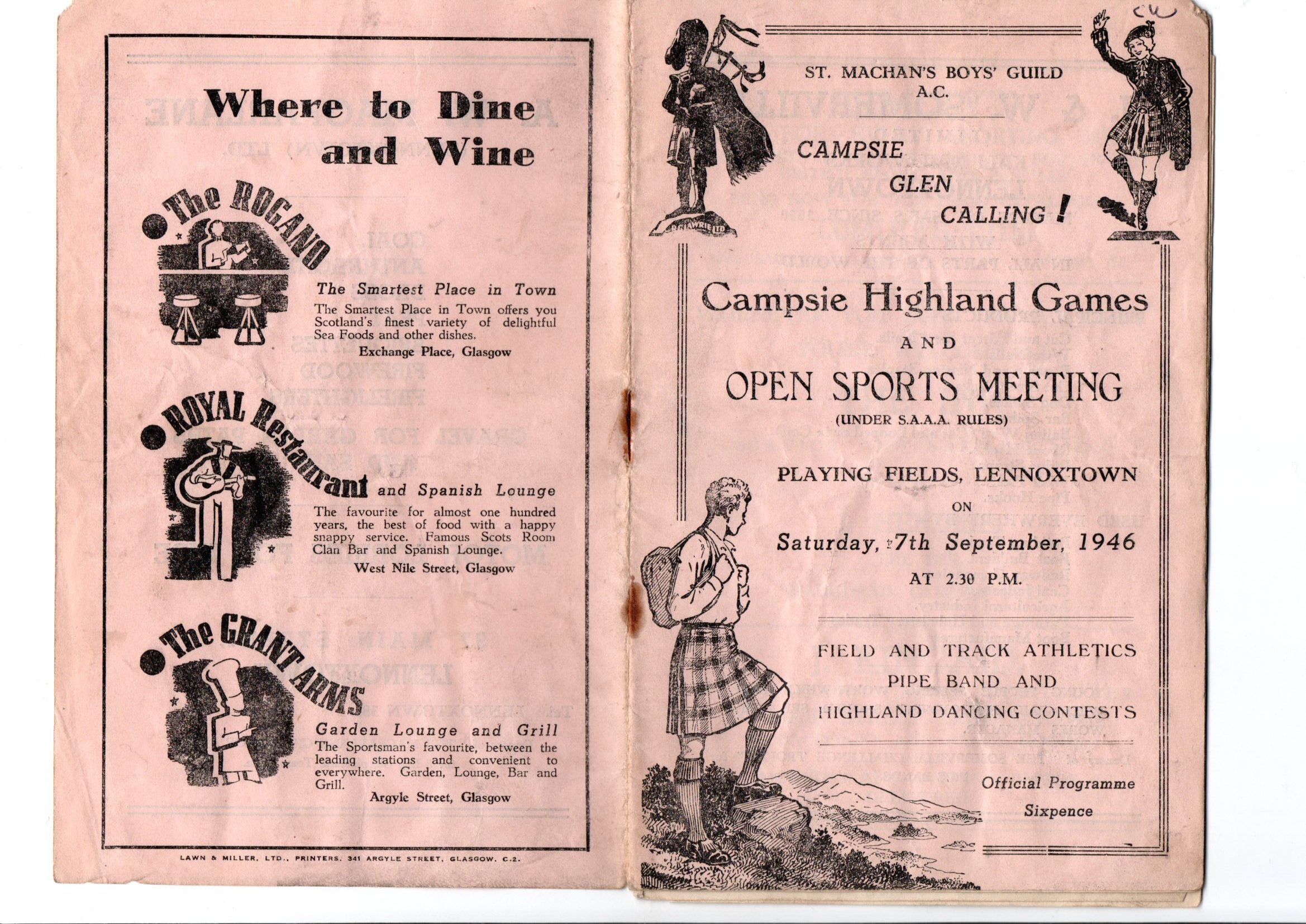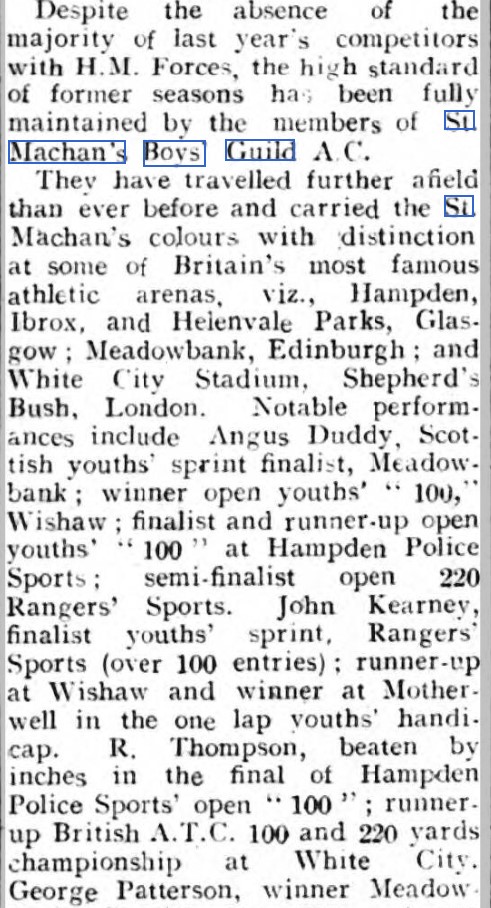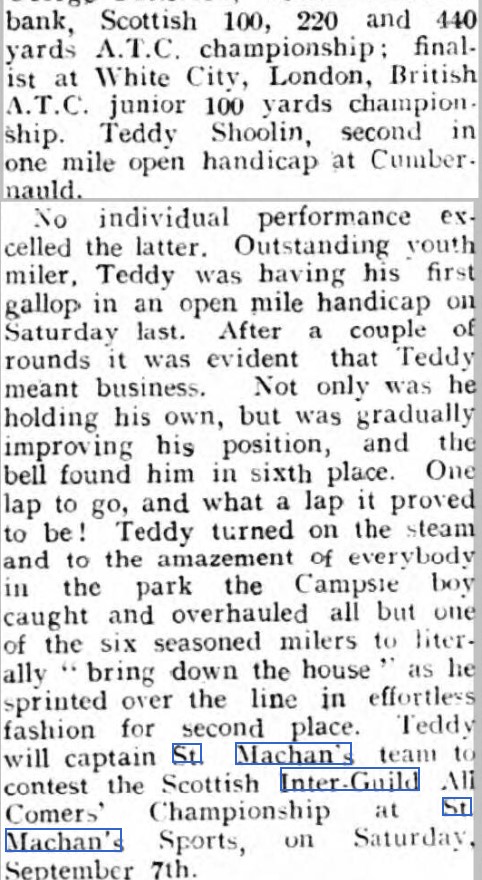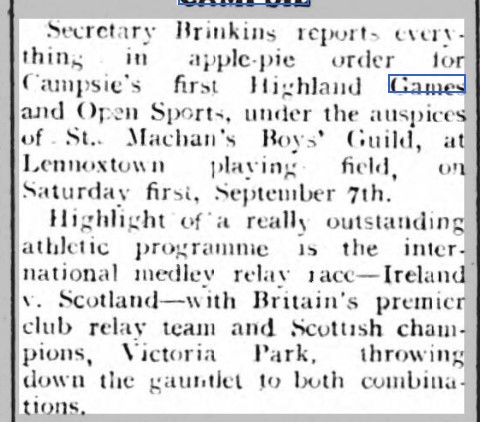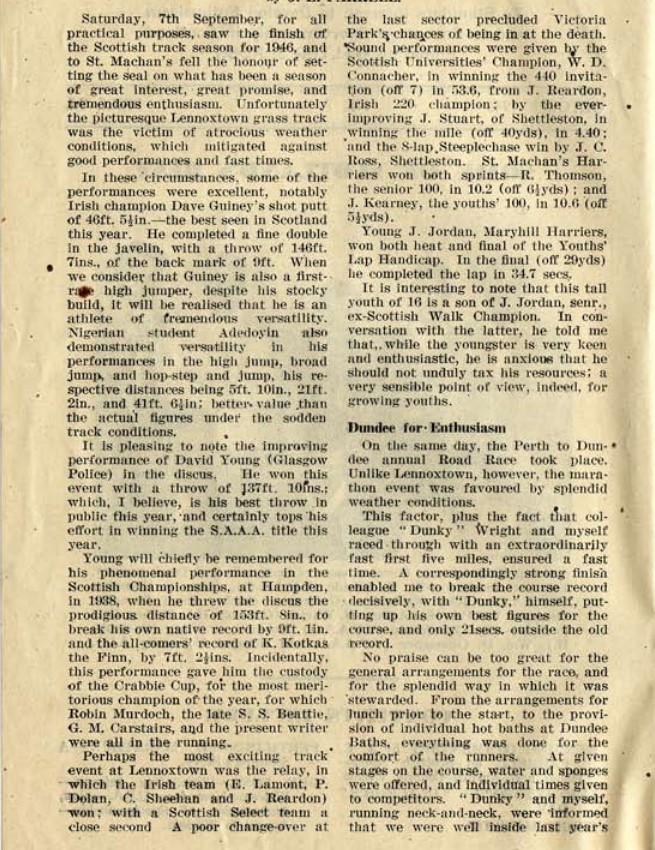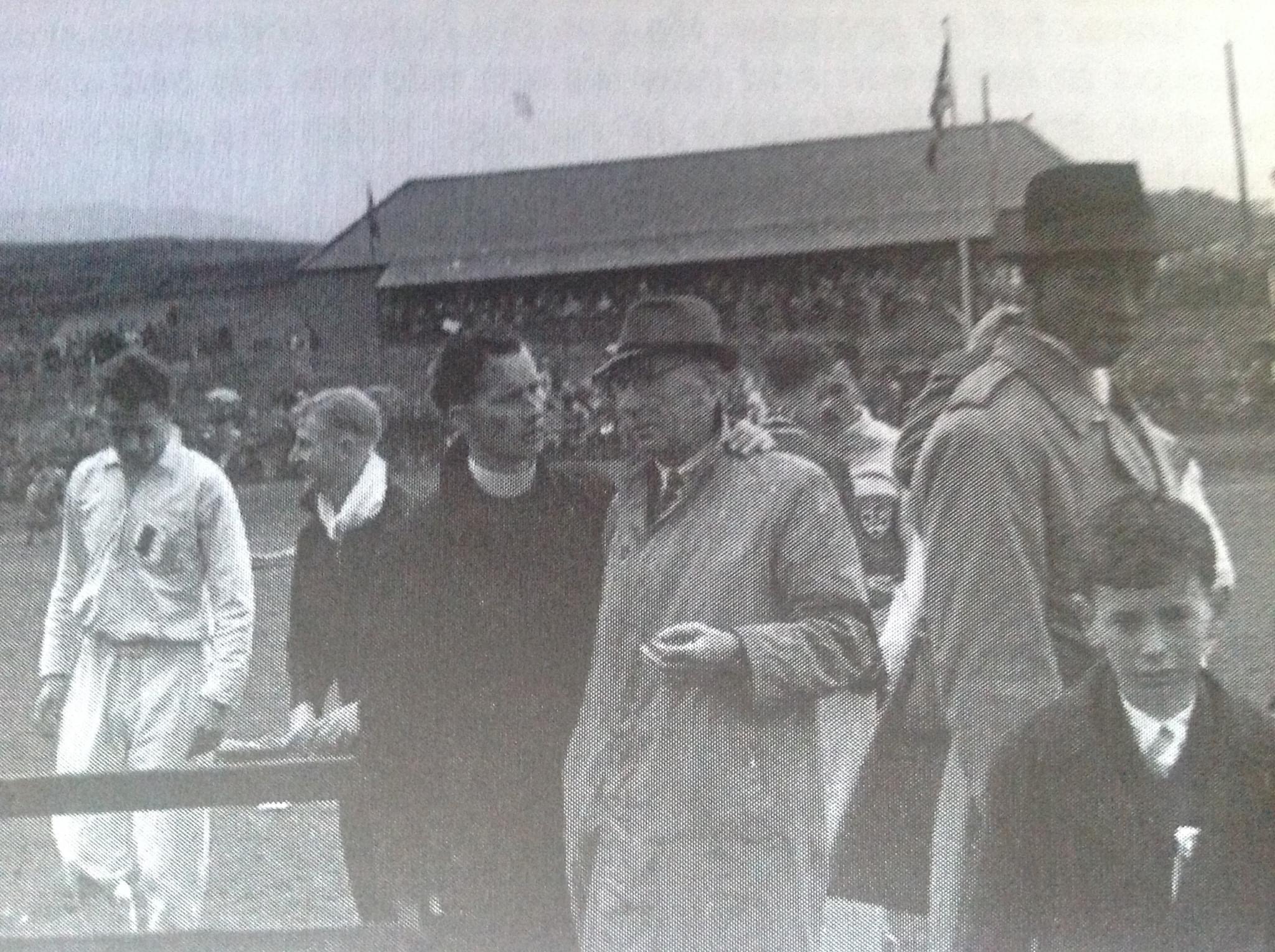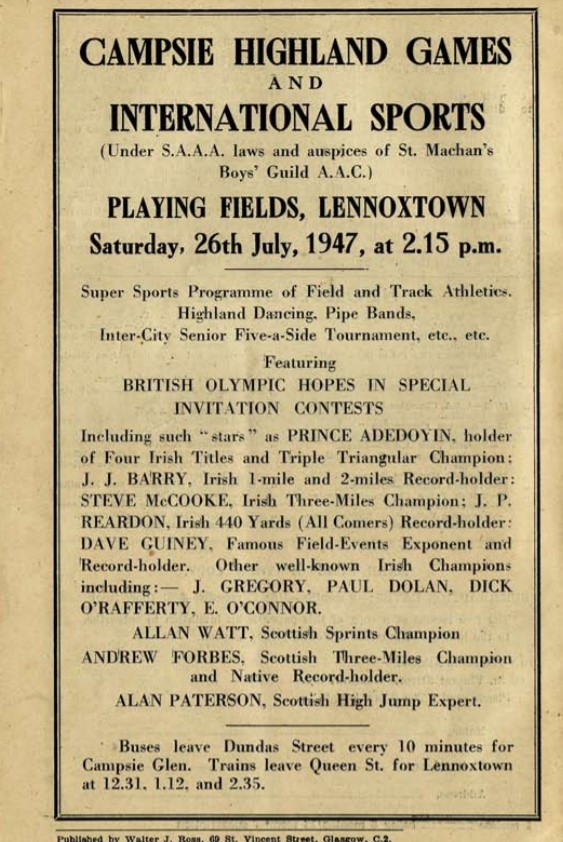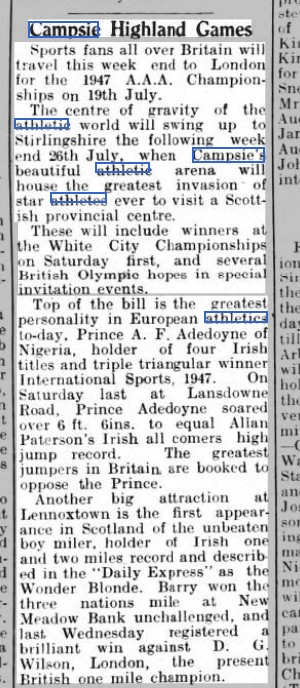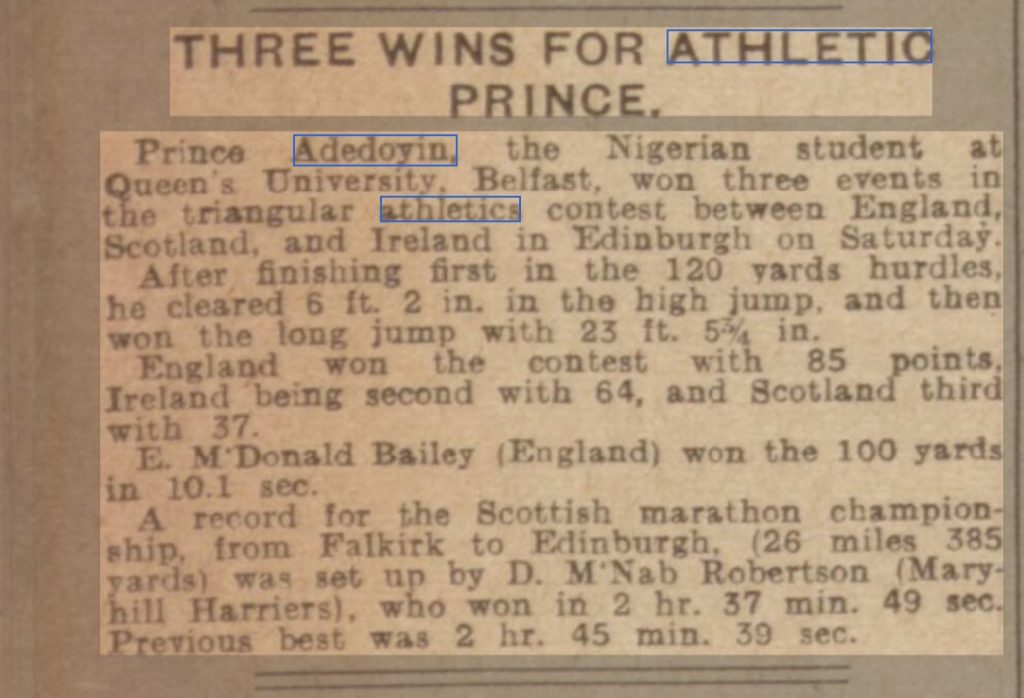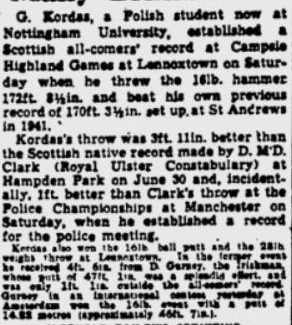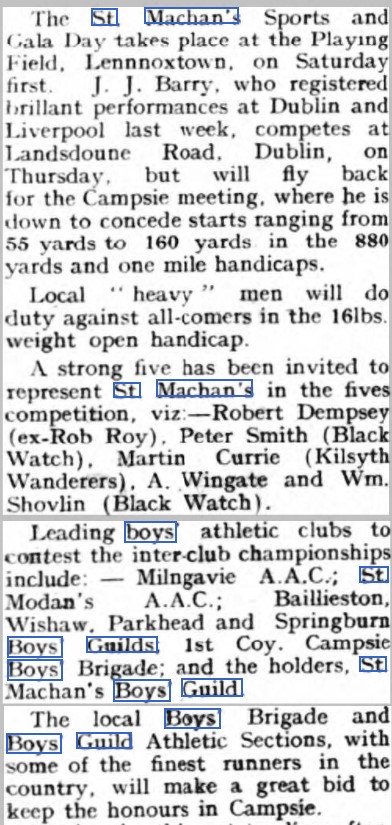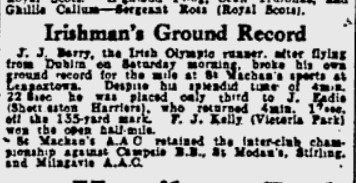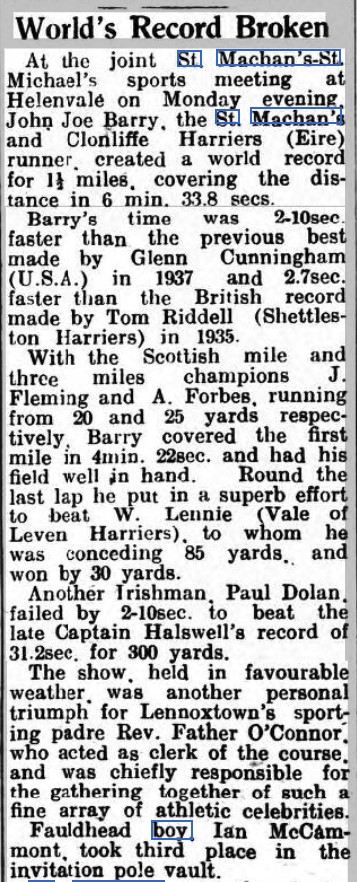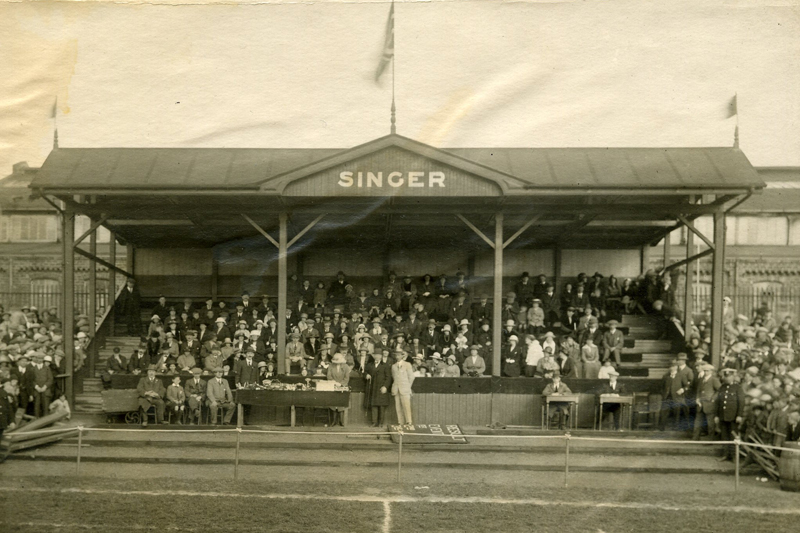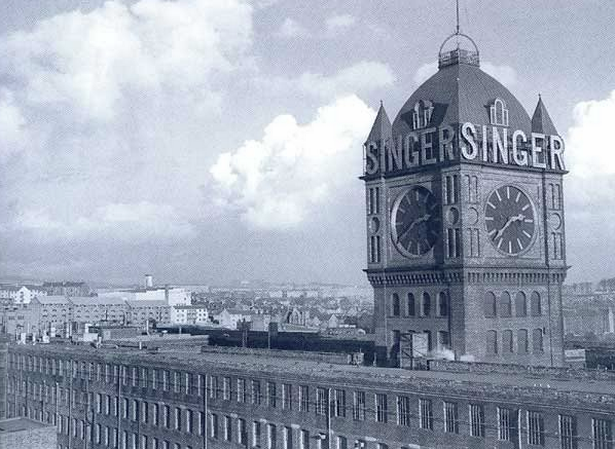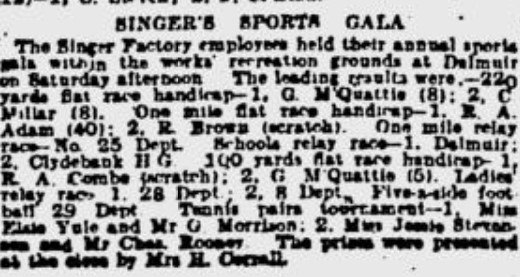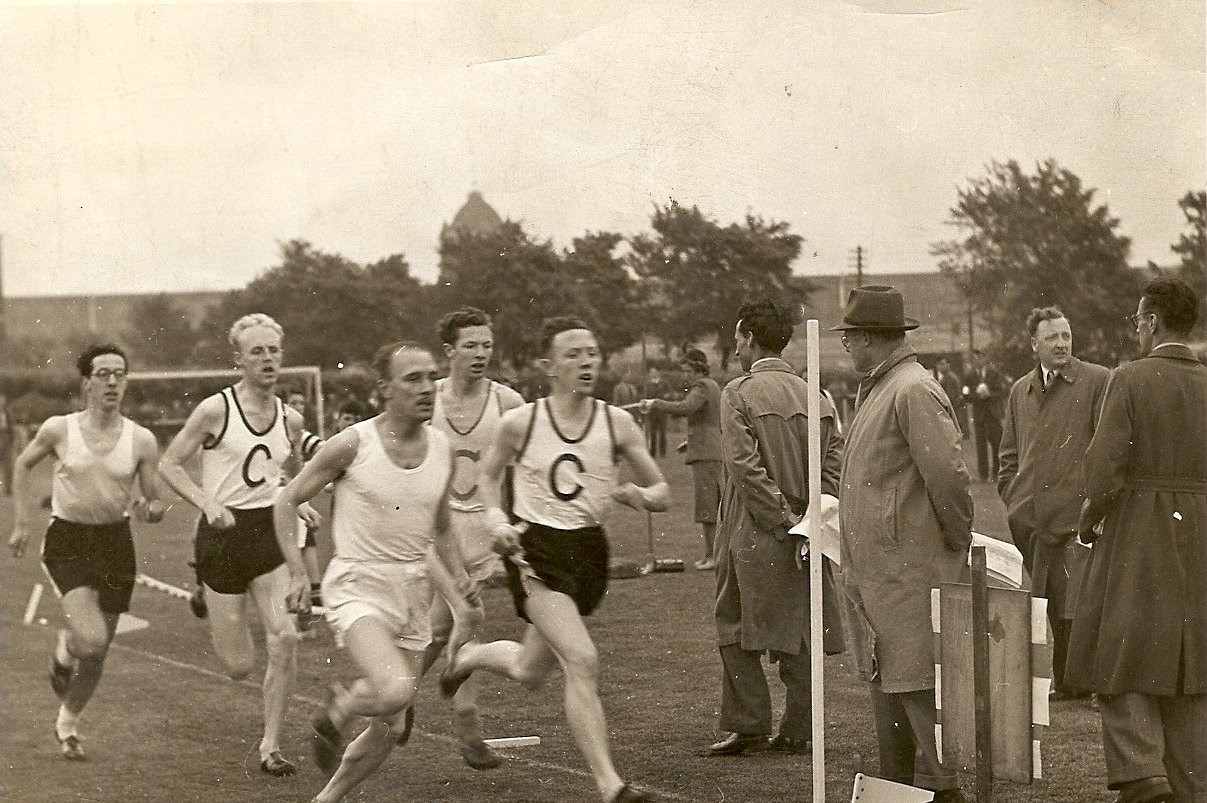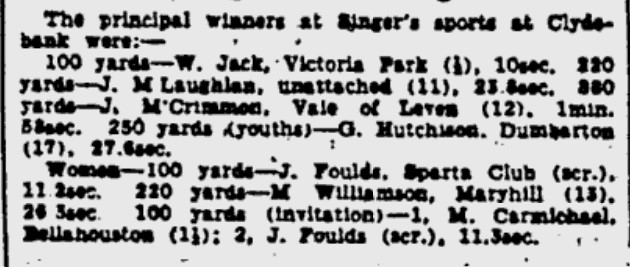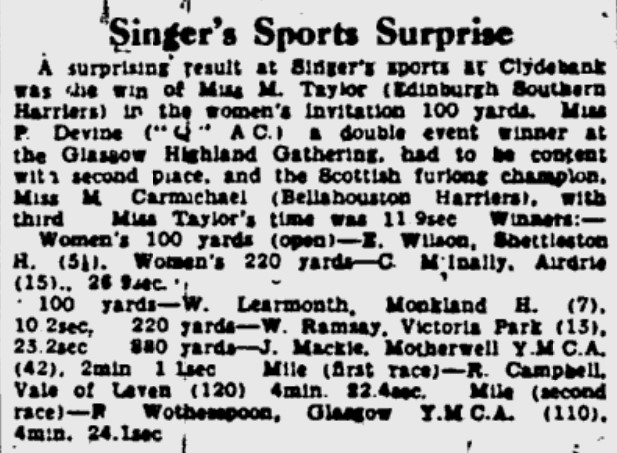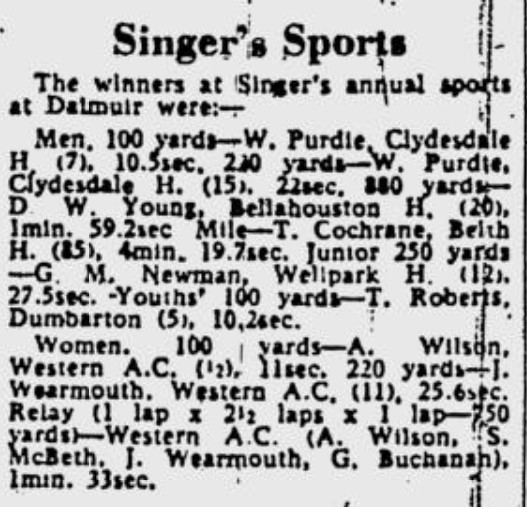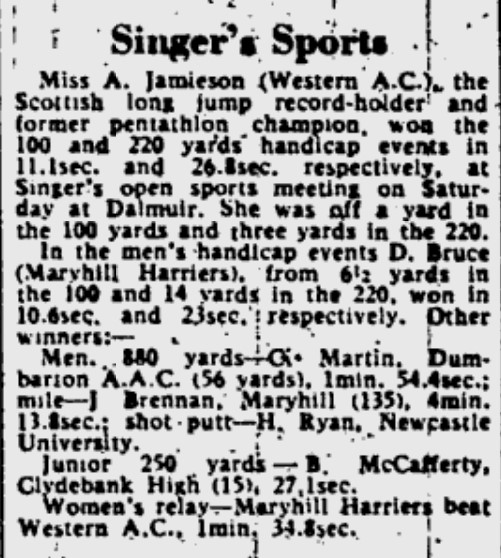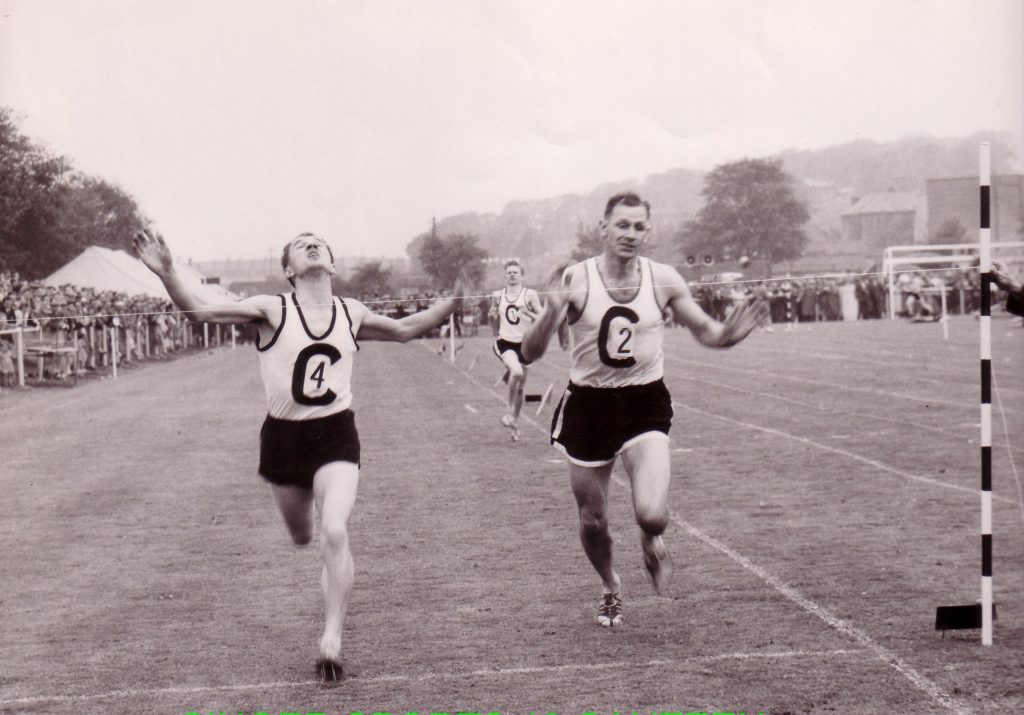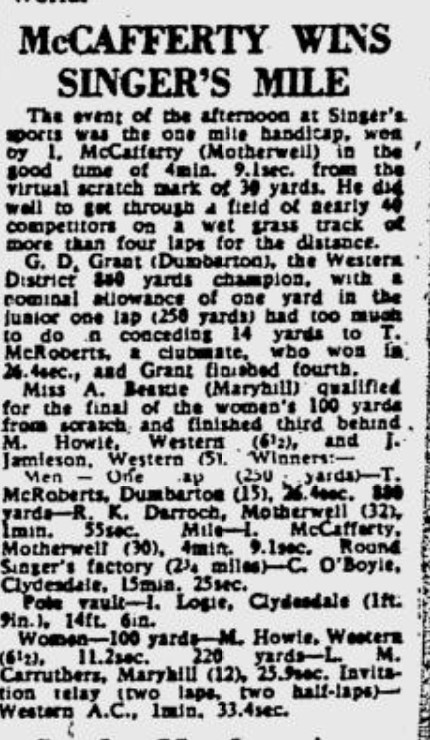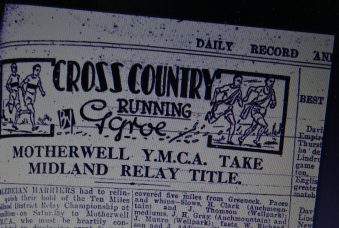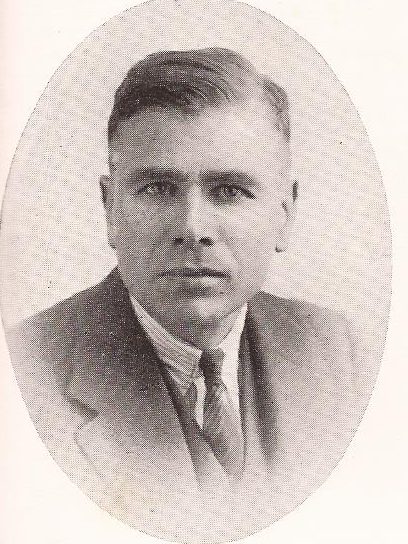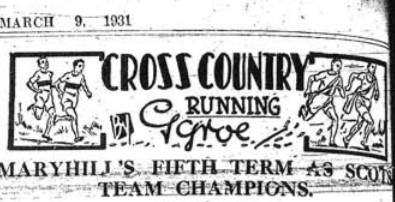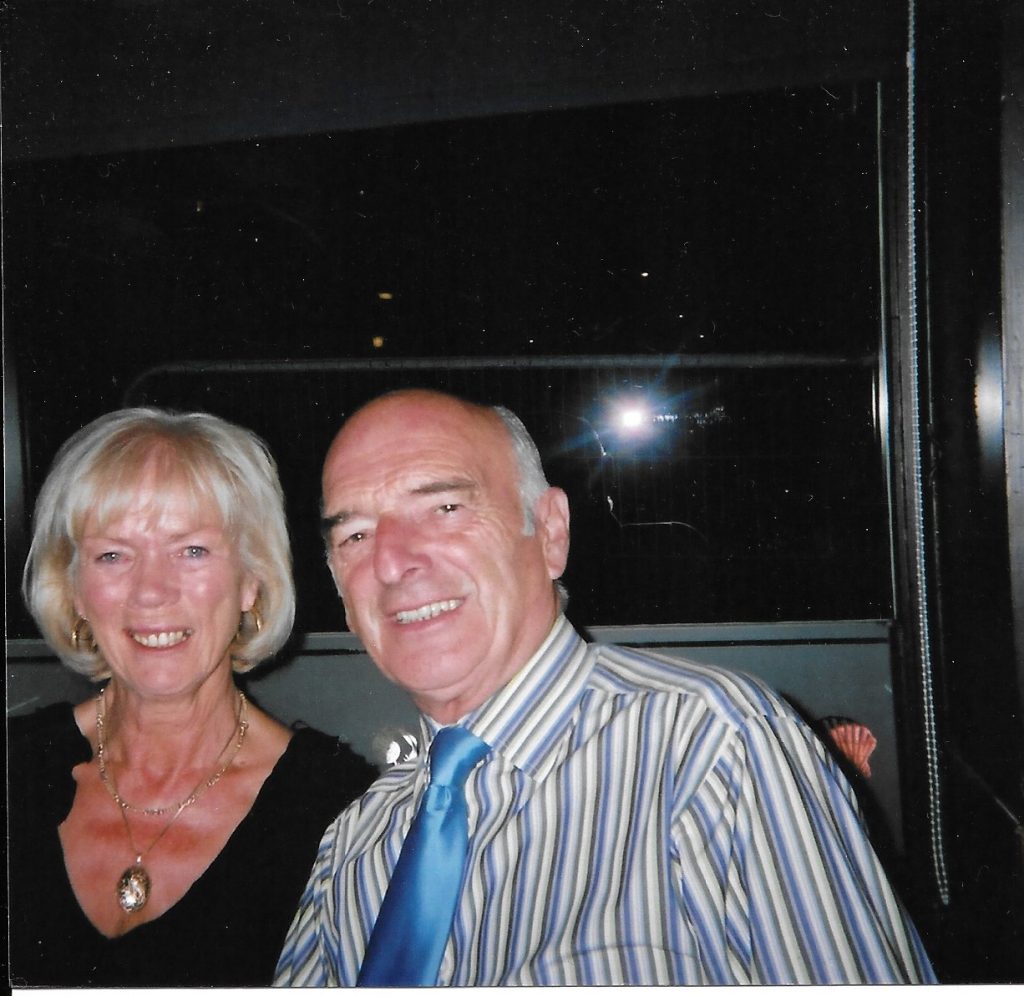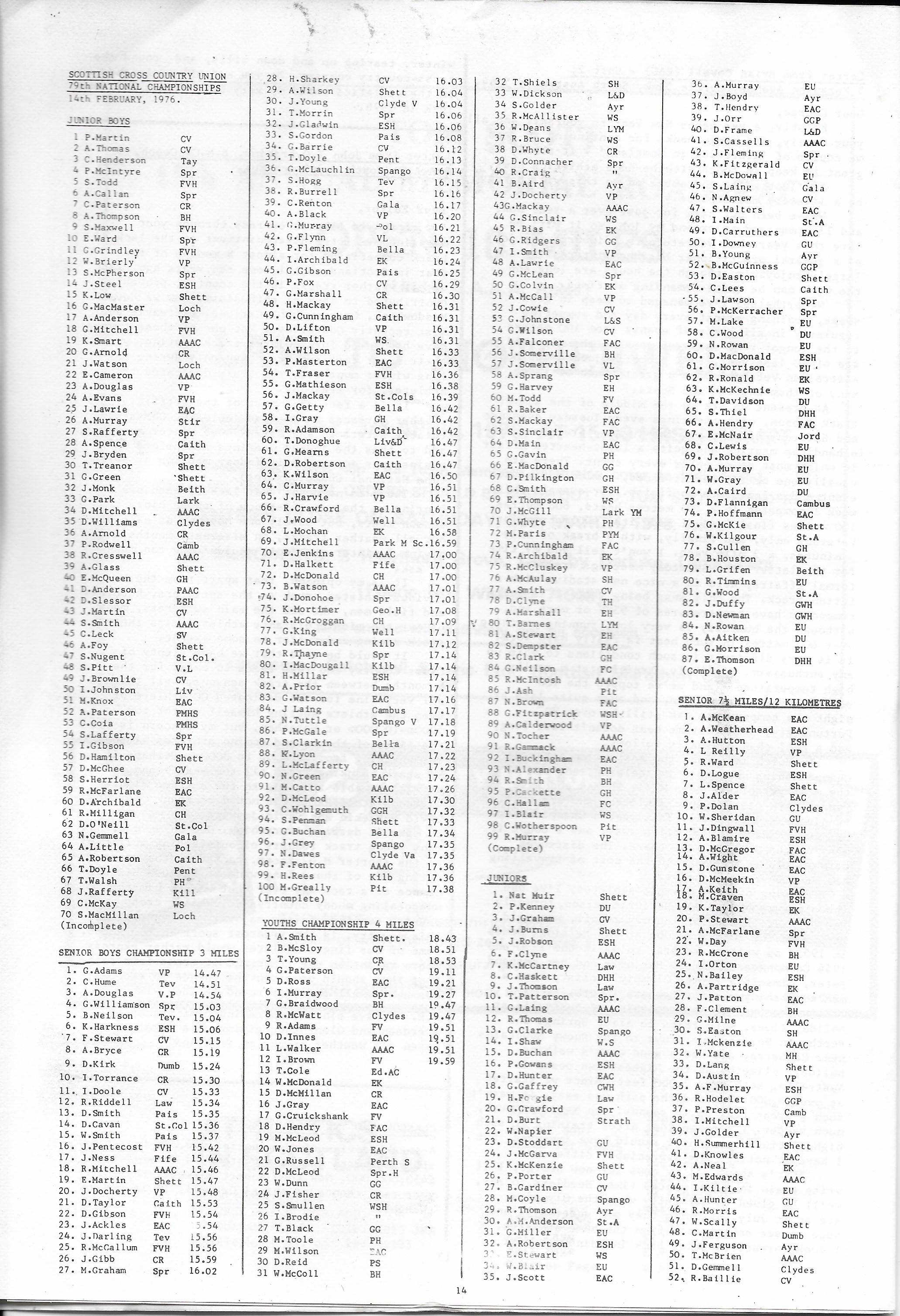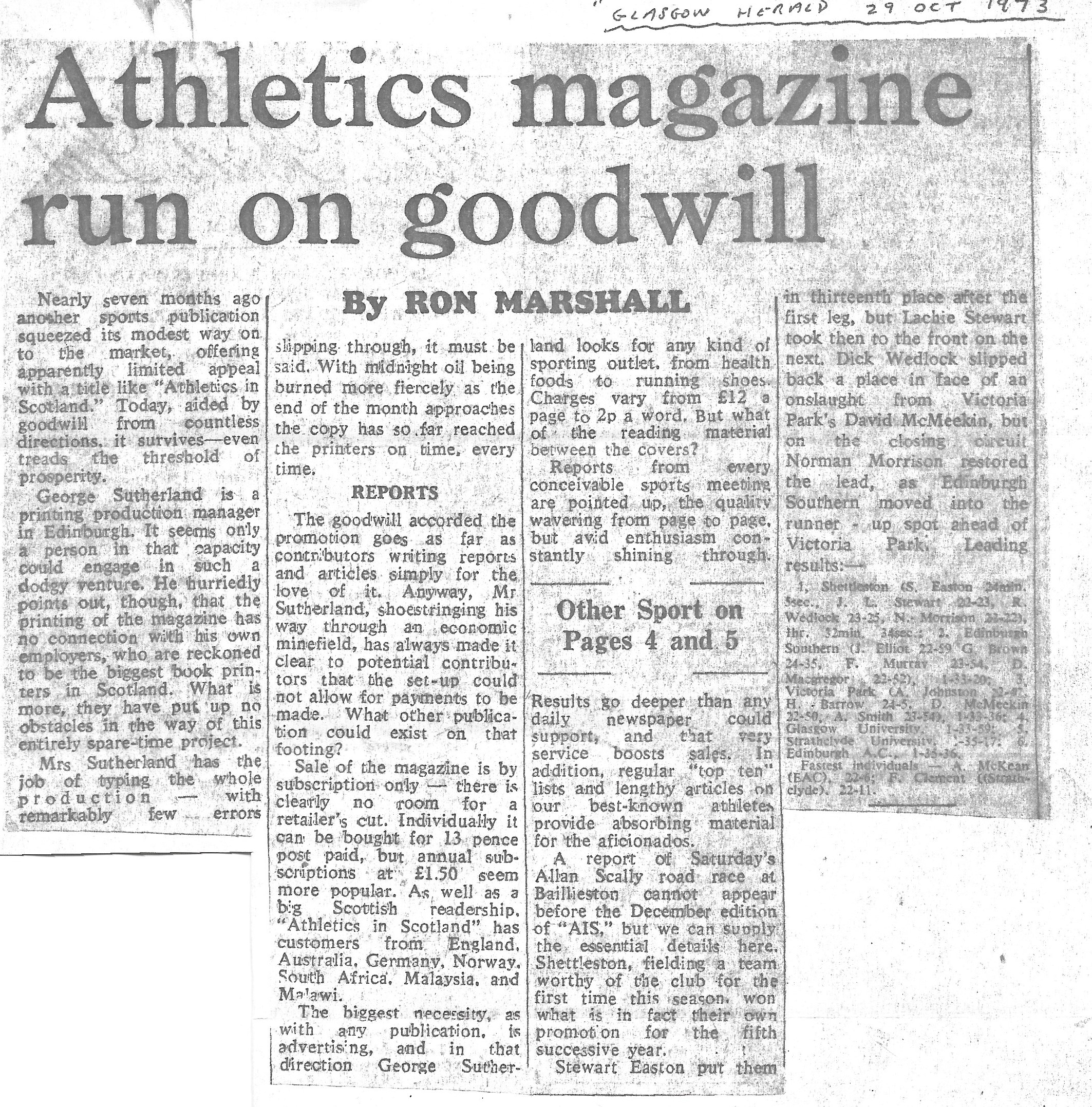Alan Sillitoe’s 1959 short novel (and 1962 film) was called ‘The Loneliness of the Long Distance Runner’. There is little doubt that an ambitious runner will find that training and racing for middle and long distances will involve a lot of solo endeavour, developing determination, stamina, speed, racing tactics, stress-management and confidence. However, one way of making improvement more likely is to join a running club, train once or twice a week with like-minded athletes and to compete in team competition, for example road and cross-country races and relays. [In retrospect, relays (over distances from 2 and a half miles up to five or even seven miles) may be most effective, in terms of character-building well-paced maximum effort and team-bonding.]
Once fitness has developed, the aim might be to make the first team. Then to enjoy decent performances which contribute to team success. Events may include contests against other schools, universities and clubs. Team wins will become more likely as runners develop – and post-race celebrations may be enjoyed even more.
Perhaps a runner may become a club ‘star’. More prestigious team wins may occur. With luck, these victories may continue for several years. But then, age and physical niggles will slow you down and others will replace you as a fast club member. You will be content to remain a team counter.
This whole process will repeat during each five-year veteran age-group! Eventually, you will no longer feature in first or any teams but will hope to keep active through jogging, cycling, walking. Maybe all you can do is chat with younger club friends and applaud their successes on Facebook! So it goes: but you will have good memories of racing – both individual and team experiences.
During most of my time as a ‘serious amateur’ distance runner, men’s races were almost entirely separate (in location and date) from women’s races. Nowadays this has all changed, thank goodness, and we can all train together, enjoy events like mass road races and watch men and women race on track and cross-country.
Looking back at a long list of team wins in the increasingly distant past, I am very aware that top Scottish stars like Allister Hutton, John Robson, Fraser Clyne and Graham Laing were chiefly responsible for success. Perhaps, eventually, nearly every runner will beat nearly any other runner at least once, but these fast, talented men were key. Yet it was good to contribute to team success and gain respect and friendship for running as hard as possible on the day.
It is certainly not all about wins! My last senior team medal was gained in January 2002 at Livingston: the East District Cross-Country Championships. Metro Aberdeen secured team silver: Nick Milovsorov, Keith Varney, Keith Farquhar, Fraser Clyne, Bruce Moroney, Colin Youngson (aged 54).
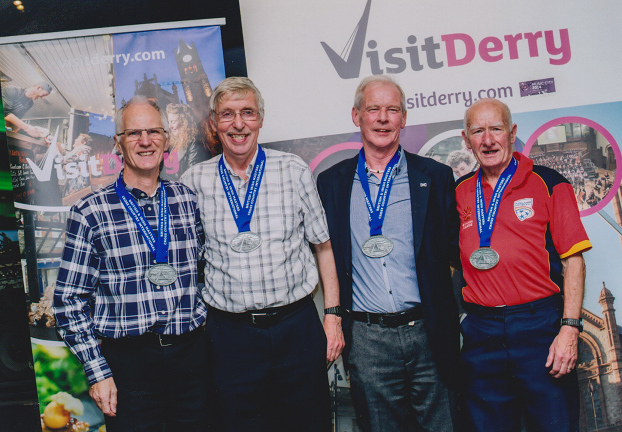
Derry 2017: Stewart, Colin, Norman and Bobby
My last international medal was obtained in November 2017 at Derry, Northern Ireland. In the British and Irish Masters Cross-Country International, the Scottish Masters M70 team (Norman Baillie, Colin Youngson, Bobby Young, Stewart McCrae) won silver behind England but in front of Northern Ireland, Ireland and Wales – and I enjoyed this success almost as much as any ancient victory!
,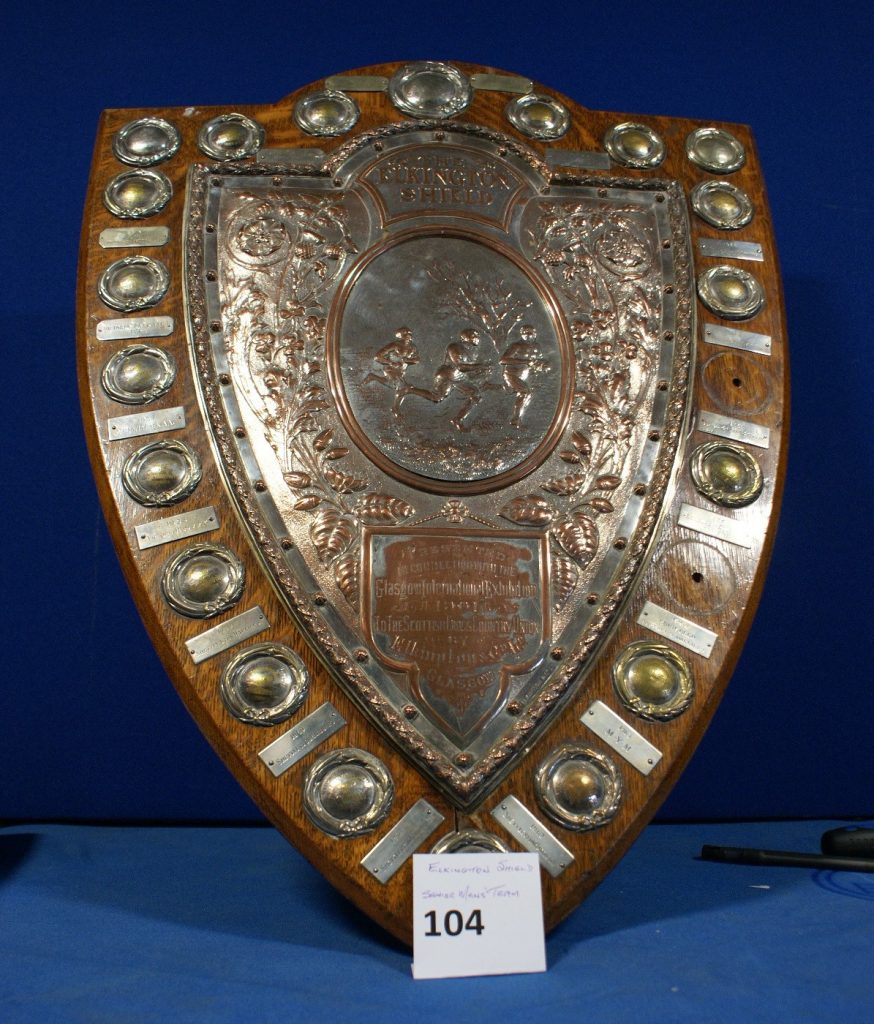
The Elkington Shield, presented to the First Team at the Scottish Men’s Senior National Cross Country Championships
TEAM WINS AND TEAM-MATES
ROAD
Nairn to Inverness 4-Man Relay: September
1969 – Aberdeen University Hare & Hounds won: Colin Youngson, Charlie Macaulay, Donald Ritchie, Robin Orr.
1970 – AU won: Colin Youngson, Charlie Macaulay, Donald Macintosh, Donald Ritchie
Edinburgh Southern Harriers Relay, Fernieside: September
1972 – Victoria Park AC won: Davie McMeekin, Hugh Barrow, Colin Youngson (11.53 fastest of the day), Pat Maclagan.
1974 – ESH won: Colin Youngson (11.43 fastest of the day), Donald Macgregor, Martin Craven, Craig Douglas.
Kingsway Road Relay, Dundee: October
1972 – Vicky Park second to ESH but Colin Youngson fastest of the day.
1975 – ESH won: Craig Douglas, Donald Macgregor, Alistair Blamire, Colin Youngson.
McAndrew Road Relay, Scotstoun, Glasgow: October
1975 – ESH won: Ian Elliot, Colin Youngson, Dave Logue, Gareth Bryan-Jones.
Allan Scally Road Relay, Baillieston, Glasgow: November
1975 – ESH won: Ian Elliot, Colin Youngson, Dave Logue, Alistair Blamire. Event record.
1978 – ESH won: Martin Craven, Colin Youngson, John Robson, Allister Hutton.
1981 – Aberdeen AAC won: Davie Lang, Fraser Clyne, Graham Laing, Colin Youngson.
Scottish Six-Stage Road Relay: at Strathclyde Park, Motherwell: March
1979 – ESH won: Colin Hume, Colin Youngson, Martin Craven, Dave Logue, Alex Robertson, Allister Hutton.
1980 – ESH won: Martin Craven, Colin Youngson, Colin Hume, Evan Cameron, Alex Robertson, Allister Hutton.
1981 – ESH won: John Gladwin, Colin Youngson, Colin Hume, Evan Cameron, Ian Elliot, Allister Hutton.
English 12-Stage Road Relay, Sutton Park, Birmingham: 1975 – ESH second to Brendan Foster’s Gateshead Harriers. ESH: Nigel Bailey, John Robson, Donald Macgregor, Fergus Murray, Gareth Bryan-Jones, Colin Youngson, Craig Douglas, Alistair Blamire, Dave Logue, Ray Weatherburn, Allister Hutton, Ian Elliot.
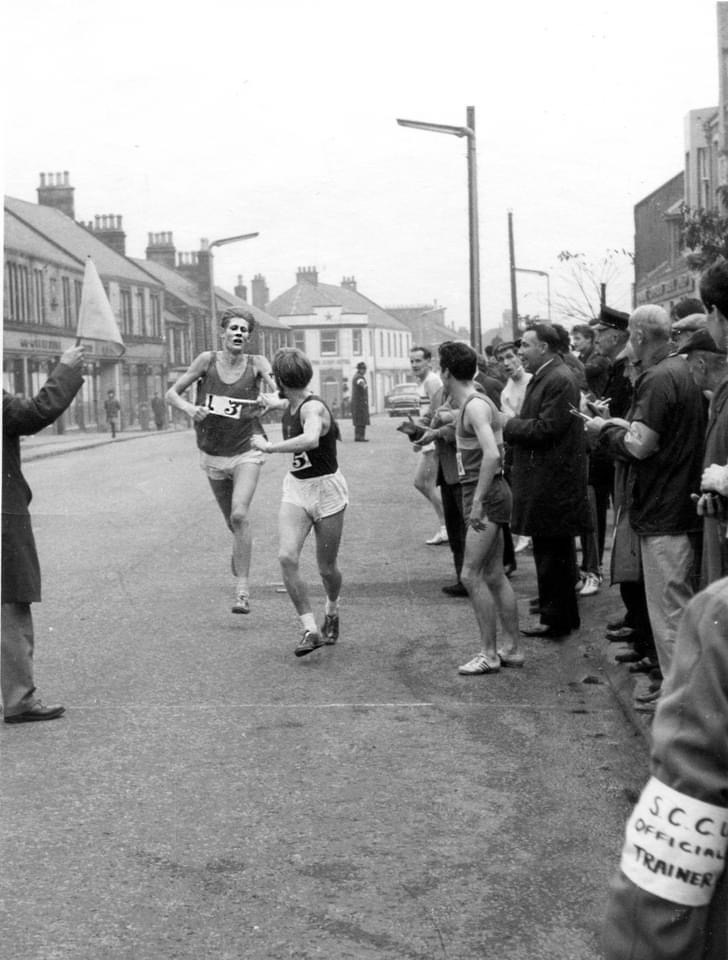
1967 Edinburgh to Glasgow Relay, end of Stage 4: Dave Logue (Edinburgh University – the winners) to Ian Y0ung
Edinburgh to Glasgow 8-Man Road Relay: November
1974 – ESH won: Colin Youngson (fastest Stage 1), Donald Macgregor, Craig Douglas, Alistair Blamire, Martin Craven, Dave Logue, Allister Hutton, Gareth Bryan-Jones.
1975 – ESH won: Colin Youngson (fastest and record Stage 1), Alistair Blamire, Martin Craven, Ian Elliot, Allister Hutton, Dave Logue, Fergus Murray, Gareth Bryan-Jones. Event record.
1977 – ESH won: Fergus Murray, Ian Orton, Colin Youngson (record Stage 3), Ian Elliot, John Robson, Dave Logue, Alex Robertson, Martin Craven. No Hutton!
1978 – ESH won: Martin Craven, Ian Elliot, Colin Hume, John Robson, Colin Youngson, Allister Hutton, Alex Robertson, Ian Orton.
1983 – Aberdeen AAC won: Graham Milne, Graham Laing, Ian Matheson, Craig Ross, Peter Wilson, Fraser Clyne, Mike Murray, Colin Youngson.
1986 – AAAC won: Chris Hall, Simon Axon, Jim Doig, Ray Cresswell, Graham Laing, Fraser Clyne, Mike Murray, Colin Youngson (fastest Stage 8).
1988 – AAAC won: Ian Matheson, Chris Hall, Ray Cresswell, Dave Duguid, Graham Laing, Fraser Clyne, Simon Axon, Colin Youngson.
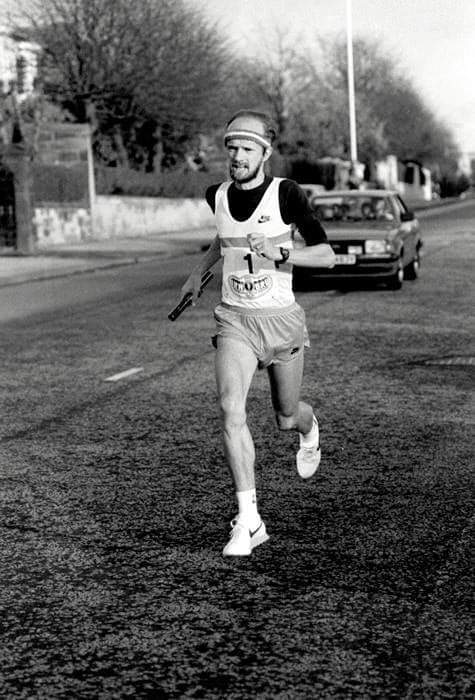
Fraser Clyne: E to G 1986, Stage 6
Scottish Veteran 8-Man Relay: March
April 1991: Alloa-Bishopbriggs, 1: AAAC won: Bill Adams, Colin Youngson (broke Stage 2 record), Charlie Noble, Ed Butler, Dave Armitage, George Sim, Mel Edwards, Rod MacFarquhar.
March 1992, Alloa—Twechar, AAAC won: Bill Adams, Ed Butler, Graham Milne, Charlie Noble, Ben Preece, George Sim, Colin Youngson (fastest on Stage 7), Francie Duguid. Broke the event record.
John o’Groats to Land’s End 10-Man Relay: April
AAAC broke the record twice:
1973: Pete Duffy, Derek Bisset, Alistair Neaves, Martin Walsh, Alastair Wood, Rab Heron, Steve Taylor, Colin Youngson, Innis Mitchell, Joe Clare.
1982: Fraser Clyne, Peter Wilson, Graham Laing, Graham Milne, Mike Murray, Alastair Wood, Donald Ritchie, Colin Youngson, George Reynolds, John Robertson.
1984, June. AAAC won the Meadowbank to George Square (E to G) 50 miles ultra: Donald Ritchie 1st, Colin Youngson 3rd.
CROSS-COUNTRY
Dunbartonshire 4-Man Relay: October 1972, Victoria Park AC won: Colin Youngson, Innis Mitchell, Davie McMeekin, Hugh Barrow.
Midland District Relay: November 1972, Vicky Park won: 1, at Lochinch. Davie McMeekin, Hugh Barrow, Pat Maclagan, Colin Youngson.
East District Relay:
1977, November, at Livingston. ESH won: John Robson, Colin Youngson, Martin Craven, Ian Elliot.
Scottish Cross-Country Relay Championships:
1978, October, at Irvine. ESH won: Ian Orton, Allister Hutton, Colin Youngson, Ian Elliot.
Scottish Veteran Relay Championships:
Metro Aberdeen Running Club won:
1995, October, Prestonpans: Paul Graham, Colin Youngson, Fraser Clyne, Keith Varney.
1997, October, at Caird Park, Dundee: Jackie Stewart, Keith Varney, Fraser Clyne, Colin Youngson.
East District Championships:
ESH won:
1975, January, at Fernieside, Edinburgh: Allister Hutton (1st), Colin Youngson (4th), Nigel Bailey, Craig Douglas, Martin Craven, Alistair Blamire.
1979, January, at Balgownie, Aberdeen: Ian Elliot (1st), Ian Orton, Colin Youngson, Evan Cameron, Martin Craven, Alex Robertson.
1980, January, at Falkirk: John Robson (1st), Ian Elliot, John Gladwin, Evan Cameron, Colin Youngson, Alex Robertson.
1981, January, at Livingston: Colin Youngson (2nd), Evan Cameron, John Gladwin, Alex Robertson, Craig Hunter, Martin Craven.
Aberdeen AAC won:
1982, January, at Dundee: Graham Laing and Fraser Clyne (1st =), Graham Milne, Colin Youngson, Ross Arbuckle, Peter Wilson.
1983, January, at Livingston: Graham Laing, Fraser Clyne, Colin Youngson, Graham Milne, Peter Wilson, Ray Cresswell.
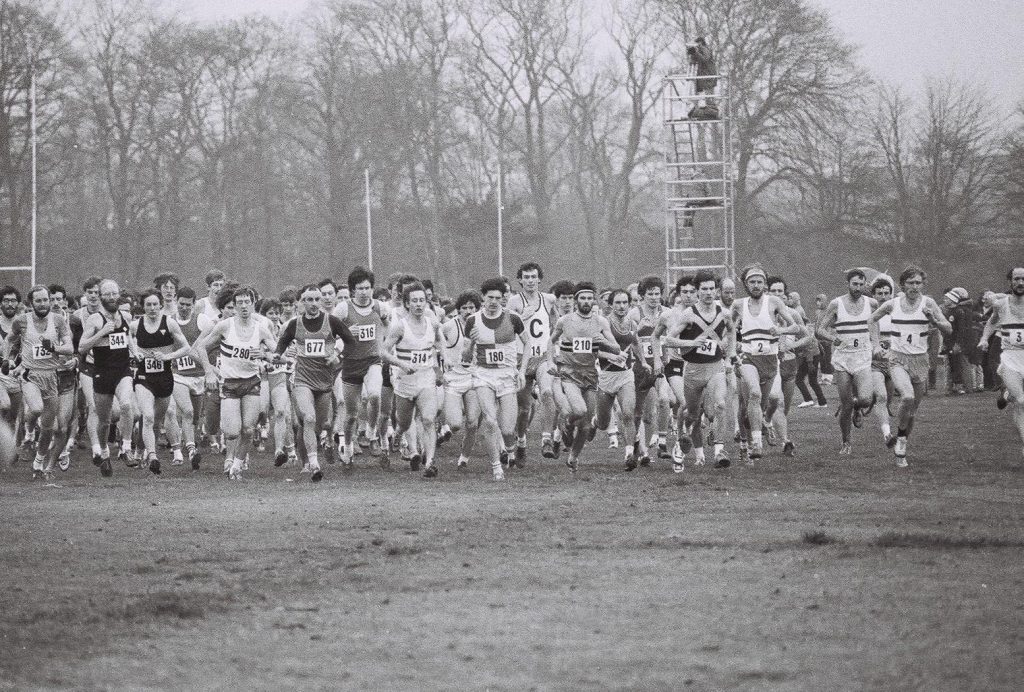
Start of the 1983 Senior National Cross Country Championships
Scottish Senior National Championships:
ESH won:
1979, February, at Livingston: Ian Elliot, Dave Logue, Ian Orton, Allister Hutton, Colin Youngson, Martin Craven.
1980, February, at Irvine: John Robson, Allister Hutton, Ian Elliot, Colin Youngson, Martin Craven, Evan Cameron. Captain Colin collected the venerable team trophy.
Scottish Veteran Championships:
AAAC won:
1988, February, at Clydebank: Colin Youngson (1st), Graham Milne, Mel Edwards, Rod MacFarquhar.
1989, February, at Balgownie: Colin Youngson (1st), Graham Milne, Rod MacFarquhar, Mel Edwards.
1990, February, at Dumfries: Colin Youngson (2nd), George Sim, Ben Preece, Graham Milne.
1992, February, at Troon: Colin Youngson (2nd), George Sim, Graham Milne, Francie Duguid.
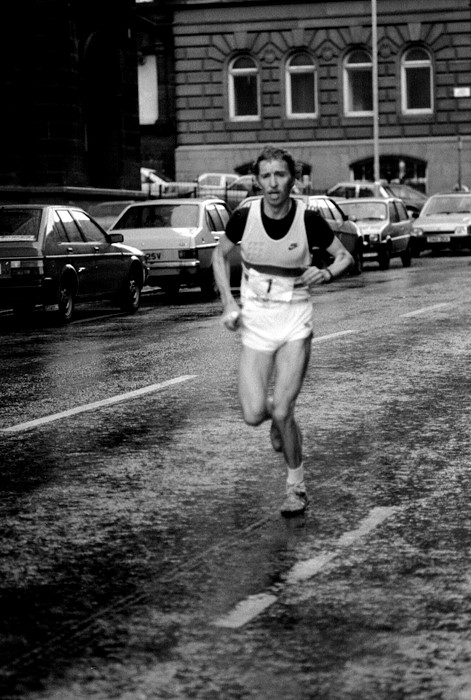
Colin Youngson: E to G 1986, Stage 8
INTERNATIONAL
In August 1975, at Reykjavik, Scotland beat Iceland in an International Athletics match. 10,000 metres: Allister Hutton 1st, Colin Youngson 2nd. (Allan Wells did long jump and 4x400m relay).
GB 2-Man team won the October 1975 Berchem International Marathon (Antwerp, Belgium: Colin Youngson (2nd), Max Coleby (3rd) – beat Ireland and several Continental outfits.
Scotland won the October 1981 Glasgow International Marathon: Colin Youngson (4th), Des Austin (5th), Alastair Macfarlane (6th) – beat Wales, Eire, Northern Ireland.
Scotland won the September 1983 Glasgow Marathon: Peter Fleming (1st), Colin Youngson (4th), Andy Daly (6th) – beat Wales, England and several other teams.
Scotland won the May 1988 Aberdeen Marathon: Hammy Cox (1st), Frank Harper, Doug Cowie, Colin Youngson – beat Wales and England.
Scottish Veterans M45 Cross-Country team, won the October 31st 1992 British and Irish Cross-Country International near Belfast – beating England, Wales, Ireland and Northern Ireland: Colin Youngson (1st M45), Terry Dolan, Colin Martin, Bill Adams, Bobby Young, Davie Fairweather.
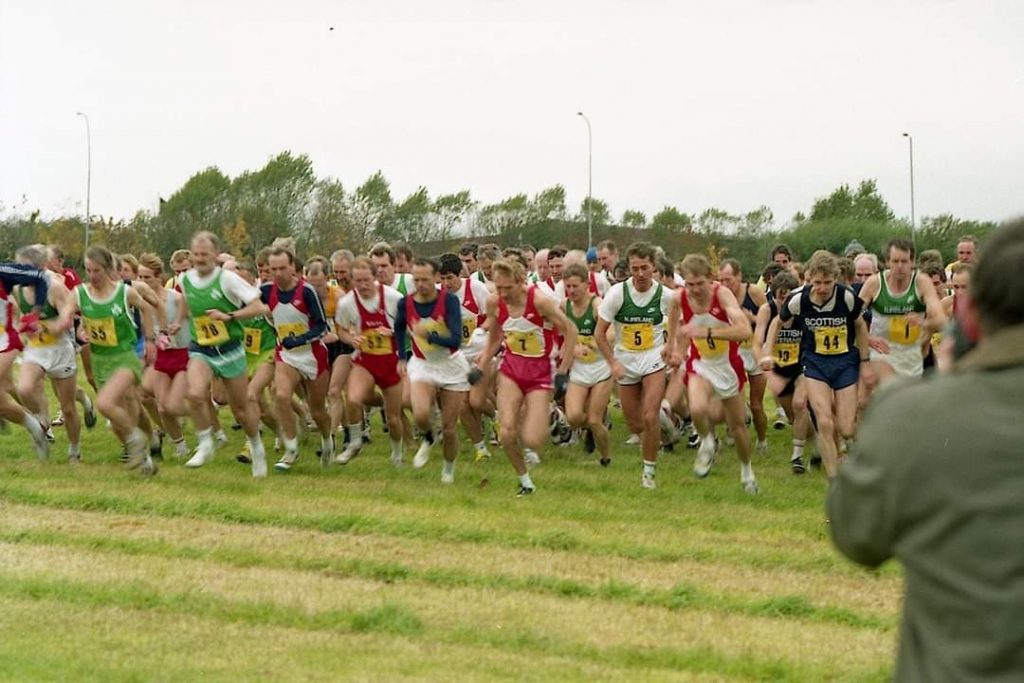
Belfast, British and Irish start 1992
GB Masters M50 Cross-Country team, won the July 1999 World Masters Championship near Gateshead: Harry Matthews, Brian Hilton, Colin Youngson.
